A Victorian sunroom, often called a conservatory, serves as a timeless link between the comfort of the indoors and the beauty of the outdoors. Characterized by ornate details, expansive glass panes, and elegant metal or wood frames, these structures were a hallmark of 19th-century architecture. They provide a light-filled sanctuary perfect for cultivating plants, enjoying a cup of tea, or simply relaxing with a book. Creating this classic retreat involves a careful blend of architectural features, period-appropriate furnishings, and lush greenery, transforming any home with a touch of historical grandeur and tranquil charm.
1. Victorian Sunroom with Ornate Cast-Iron Framing
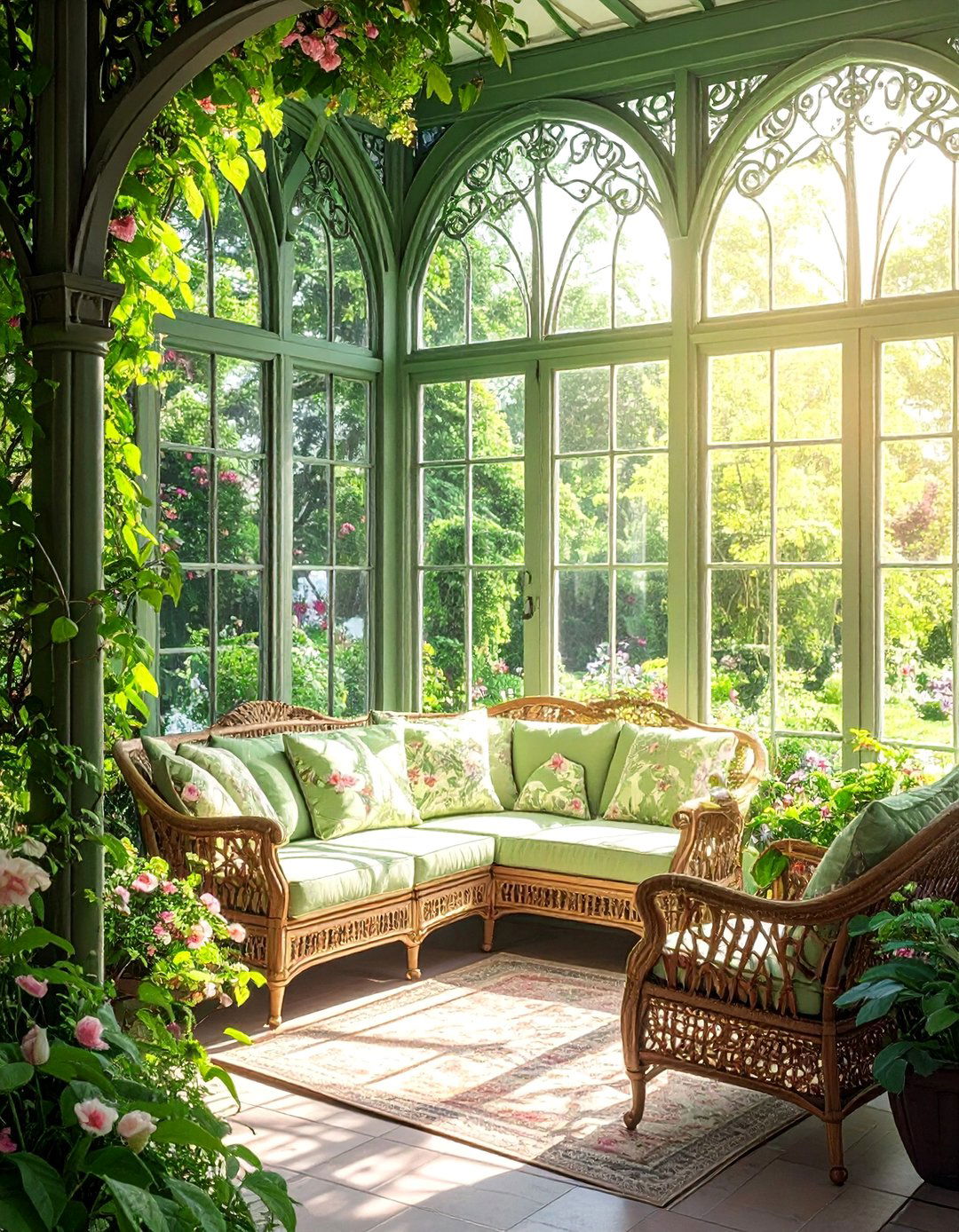
The quintessential Victorian sunroom often features an intricate cast-iron frame, a testament to the industrial advancements of the era. This material allows for slender yet strong supports, maximizing the glass area and creating an airy, open feel. The ironwork is frequently detailed with elaborate scrollwork, finials, and decorative cresting along the roofline, embodying the period's love for ornamentation. Choosing a classic color like deep bottle green or stark white for the frame enhances its delicate patterns against the transparency of the glass. This structural elegance provides a durable and historically accurate foundation for a truly classic and light-filled retreat.
2. Victorian Sunroom with Stained Glass Transom Windows
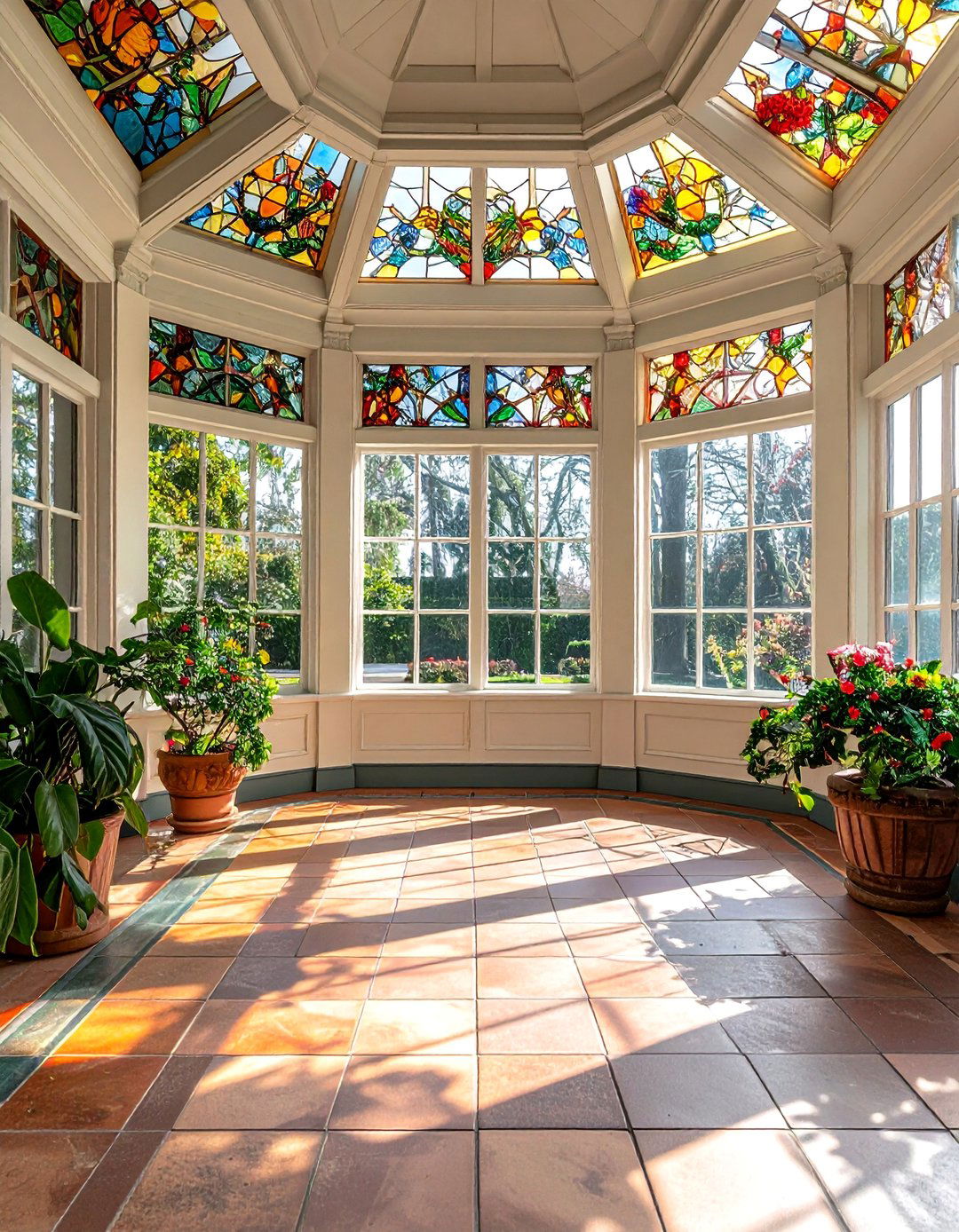
Incorporating stained glass transom windows is a brilliant way to infuse a Victorian sunroom with color and artistry. Placed above the main windows or doors, these decorative panels catch the sunlight and cast vibrant, shifting patterns across the interior. Designs often feature botanical motifs like flowers, vines, or birds, rendered in rich jewel tones of ruby red, emerald green, and sapphire blue. This element not only provides a focal point but also honors the Gothic Revival influence prevalent in Victorian design. It adds a layer of privacy without sacrificing light, creating an atmosphere that is both enchanting and authentic.
3. Victorian Sunroom Featuring a Tiled Mosaic Floor
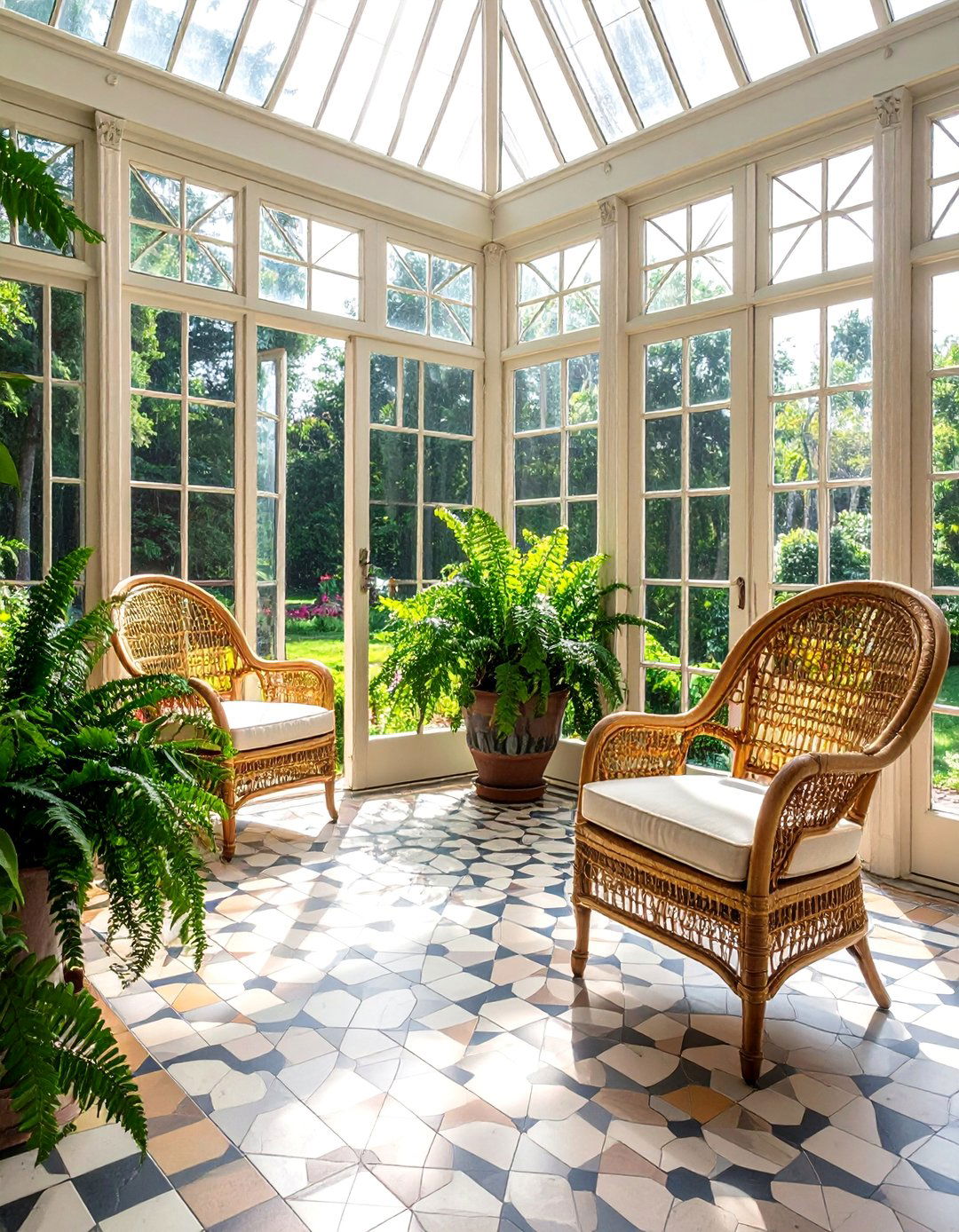
A tiled mosaic floor provides a durable and decorative foundation for a Victorian sunroom. Geometric patterns, such as checkerboards, encaustic-style tiles, or intricate floral borders, were immensely popular during the period and remain a classic choice. These floors are not only beautiful but also practical for a space that bridges the indoors and outdoors, as they are easy to clean and hold up well to foot traffic and moisture from watering plants. Using a combination of earthy terracotta, black, and cream tiles can create a warm, inviting look that grounds the airy glass structure and complements traditional furnishings.
4. Victorian Sunroom Furnished with Wicker and Rattan
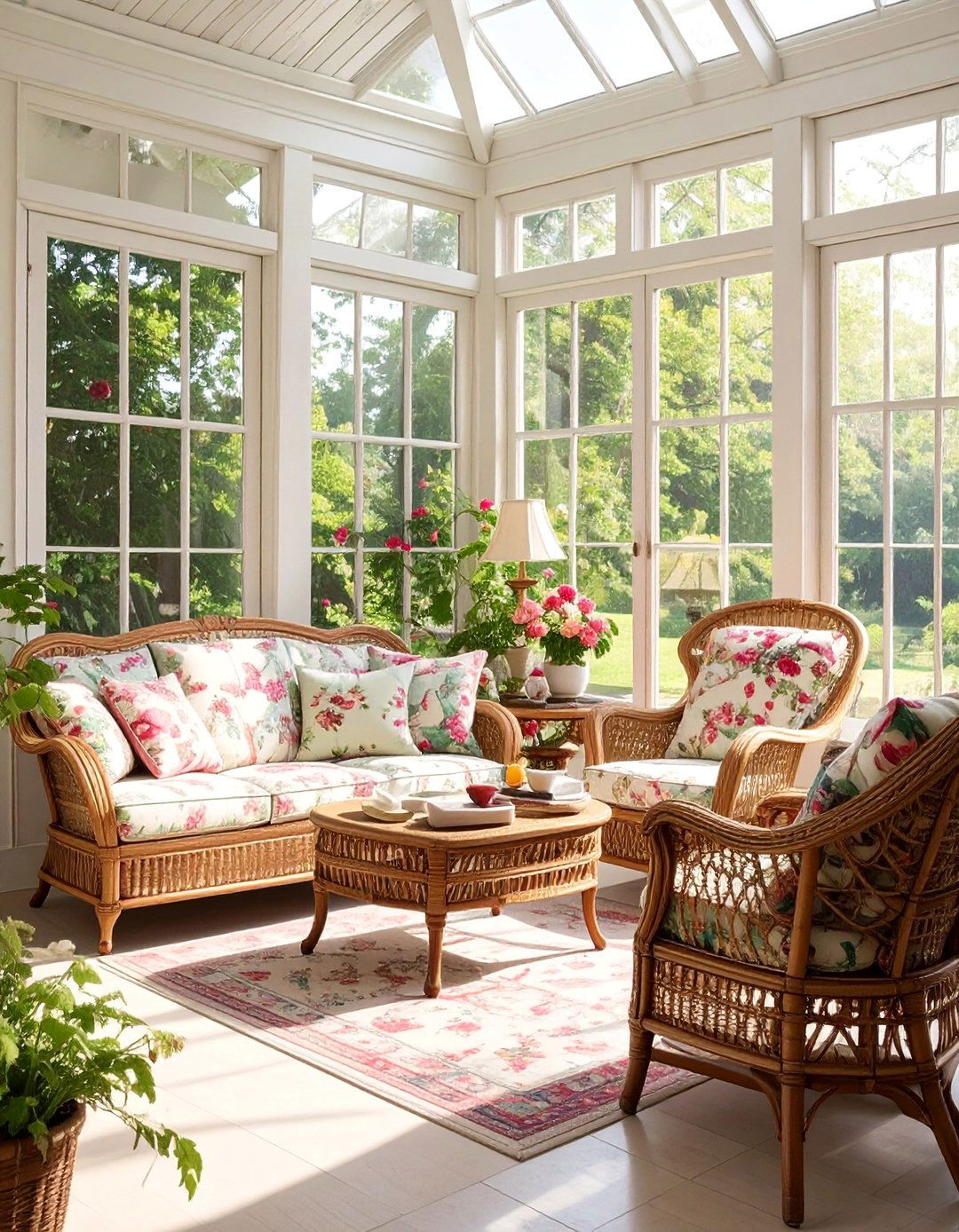
Wicker and rattan furniture are synonymous with the relaxed elegance of a Victorian sunroom. Their lightweight, natural texture perfectly suits the garden-like atmosphere of the space. A typical arrangement might include a settee, several armchairs with gracefully curved arms, and a matching coffee or side table. To enhance comfort and add a touch of period style, these pieces are often adorned with plush cushions upholstered in botanical or floral chintz fabrics. This choice of furniture creates an inviting seating area that feels both casual and sophisticated, encouraging long afternoons of leisure among the plants.
5. Victorian Sunroom as a Lush Botanical Conservatory
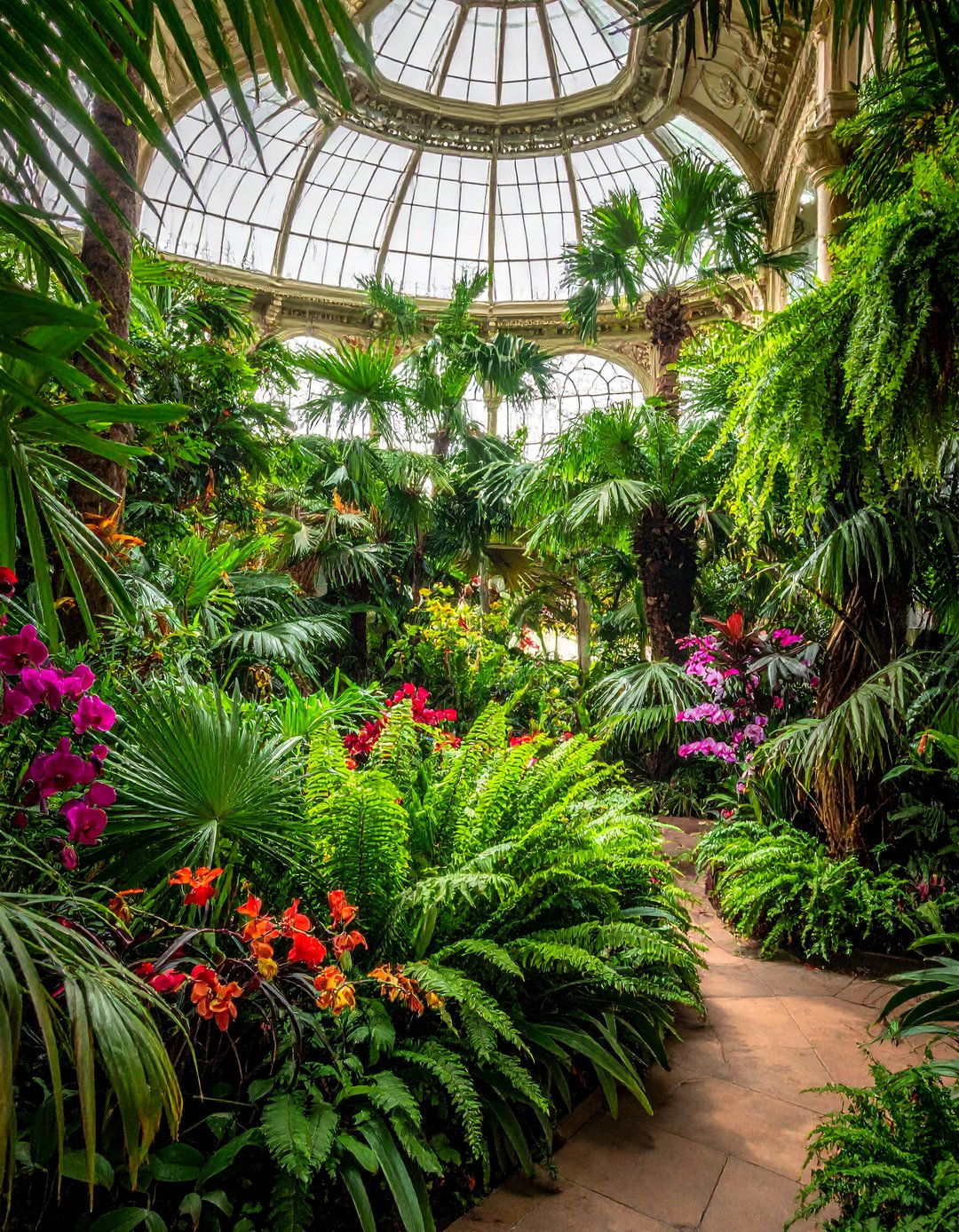
Transforming a Victorian sunroom into a botanical conservatory honors its original purpose. This idea involves filling the space with an abundance of lush, exotic plants that thrive in the bright, humid conditions. Tall palms and ferns can create a verdant canopy, while hanging baskets of flowering fuchsias or trailing ivy add layers of greenery. Consider adding tiered plant stands to display a collection of orchids, begonias, or other hothouse favorites. This approach creates a living, breathing oasis that changes with the seasons, offering a transportive escape and a direct connection to nature without leaving the home.
6. Victorian Sunroom with a Gothic Revival Influence
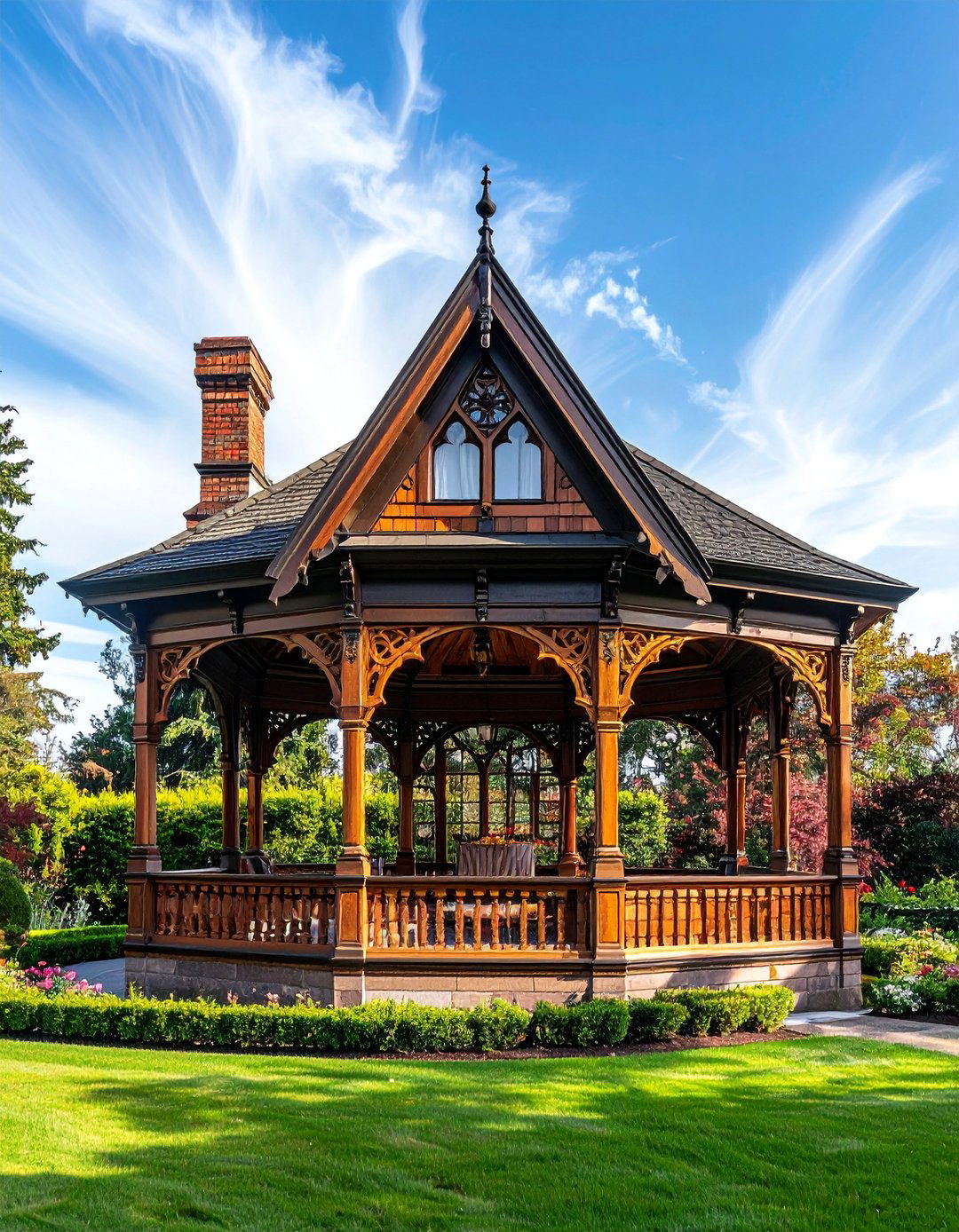
A Victorian sunroom designed with a Gothic Revival influence makes a dramatic and elegant statement. This style is characterized by pointed arches in the windows and doorways, steeper roof pitches, and decorative elements like trefoils or quatrefoils integrated into the framework. The overall effect is one of soaring height and verticality, drawing the eye upward. Often constructed from dark-painted wood or iron, these structures have a slightly more formal and ecclesiastical feel than their classical counterparts. This architectural choice creates a space that is not just a sunlit room but a truly grand and historic-feeling conservatory.
7. Victorian Sunroom Featuring a Classic Bay Window Design
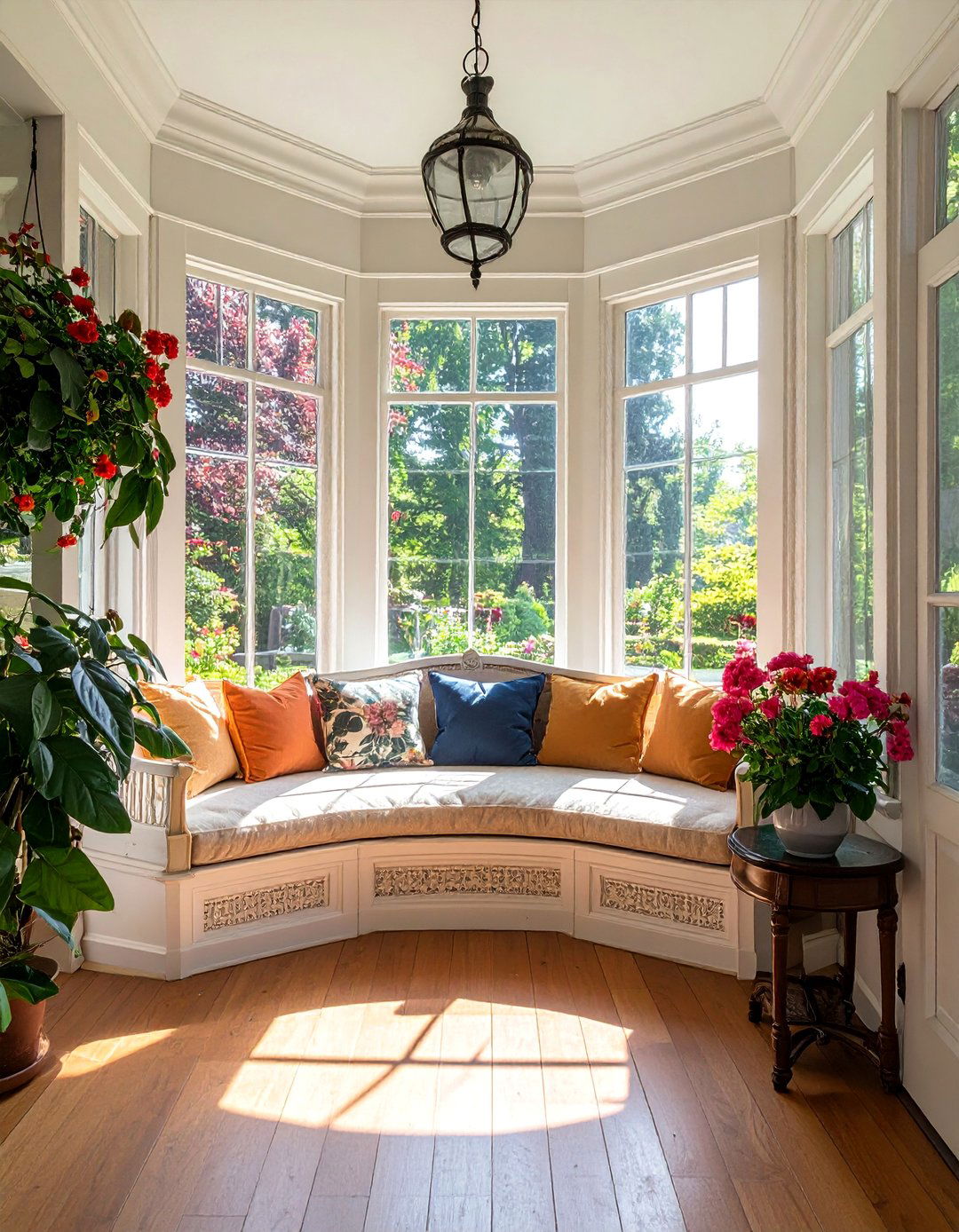
A Victorian sunroom designed with a classic bay window adds architectural interest and expands the interior space. This design typically features a three-sided or multi-sided projection, creating a panoramic view of the garden. The angled windows capture sunlight from multiple directions throughout the day, making the room exceptionally bright. This nook is the perfect spot for a cozy reading chair or a built-in window seat topped with comfortable cushions. The bay window shape breaks up a flat exterior wall, adding dimension and a distinctively Victorian character that enhances both the inside and outside of the home.
8. Victorian Sunroom with a Lean-To Glass Structure
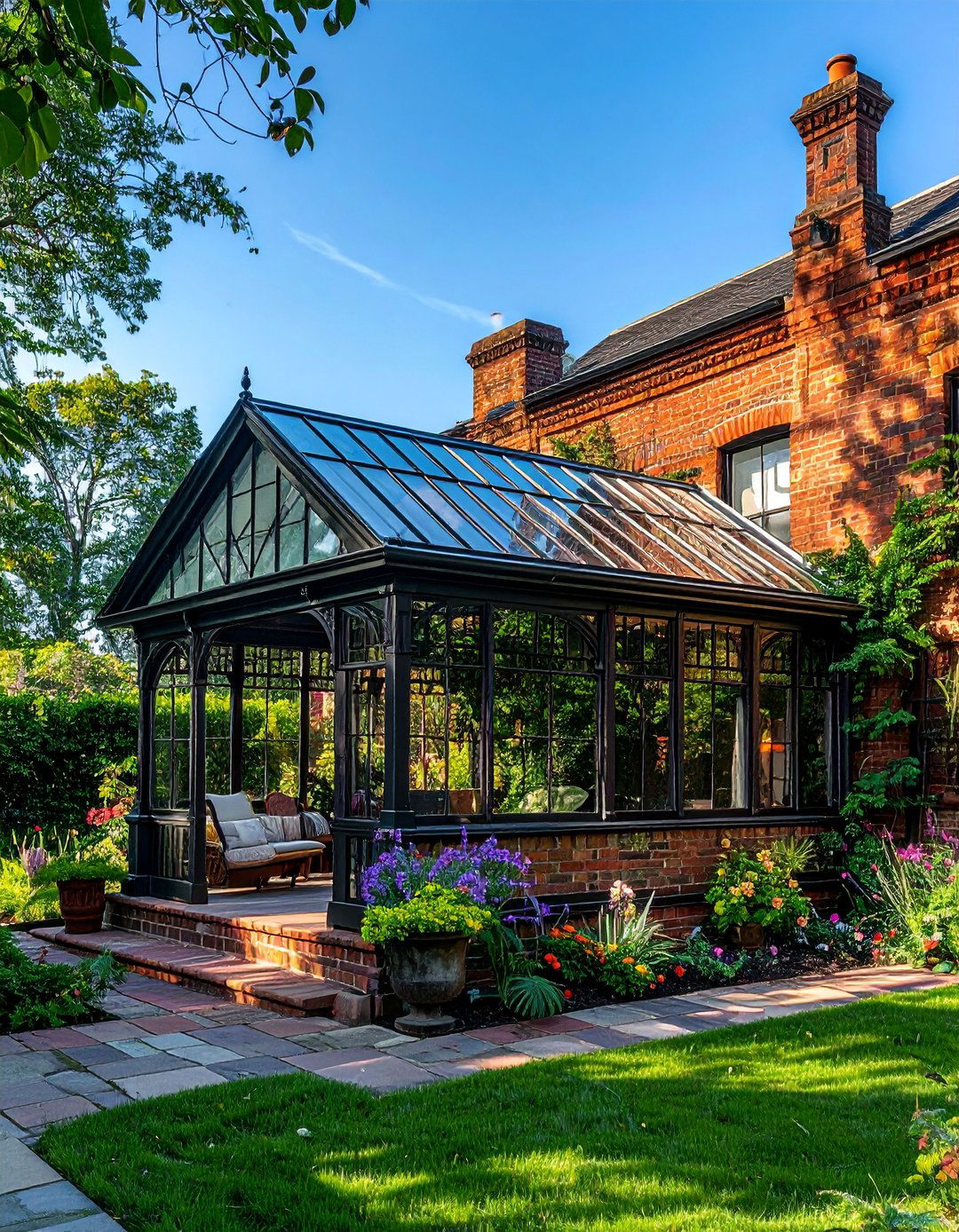
For homes with limited space or for a more understated addition, the lean-to Victorian sunroom is an ideal choice. This design features a single-pitched roof that slopes down from the main wall of the house, making it a cost-effective and structurally simple option. Despite its simpler form, it can still incorporate classic Victorian elements like decorative roof cresting and large glass panes set in a slender wooden or metal frame. This style is perfect for creating a bright corridor, a cozy breakfast nook, or a protected space for starting garden plants, offering functionality and charm in a compact footprint.
9. Victorian Sunroom with Exposed Brick Interior Walls
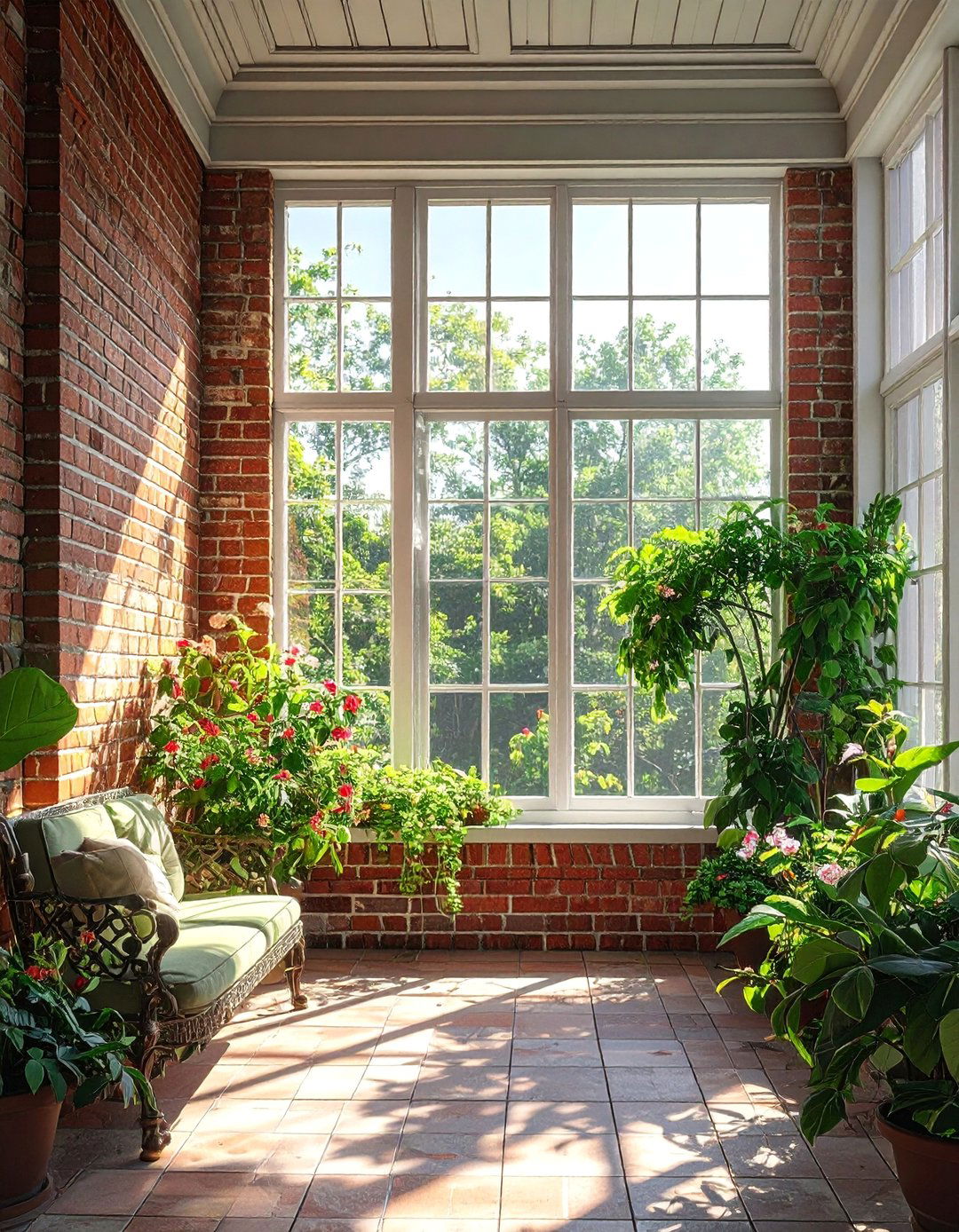
Using an exposed brick wall as the interior anchor for a Victorian sunroom adds texture, warmth, and a sense of history. The rustic character of the brick provides a beautiful contrast to the delicate metal or wood framework and the vast expanses of glass. This feature seamlessly blends the new structure with the original home, making the sunroom feel like an organic extension. The earthy red and brown tones of the brick also complement the green foliage of indoor plants and the natural materials of wicker furniture, creating a cohesive and inviting atmosphere that feels both sturdy and elegant.
10. Victorian Sunroom Featuring a Freestanding Potbelly Stove
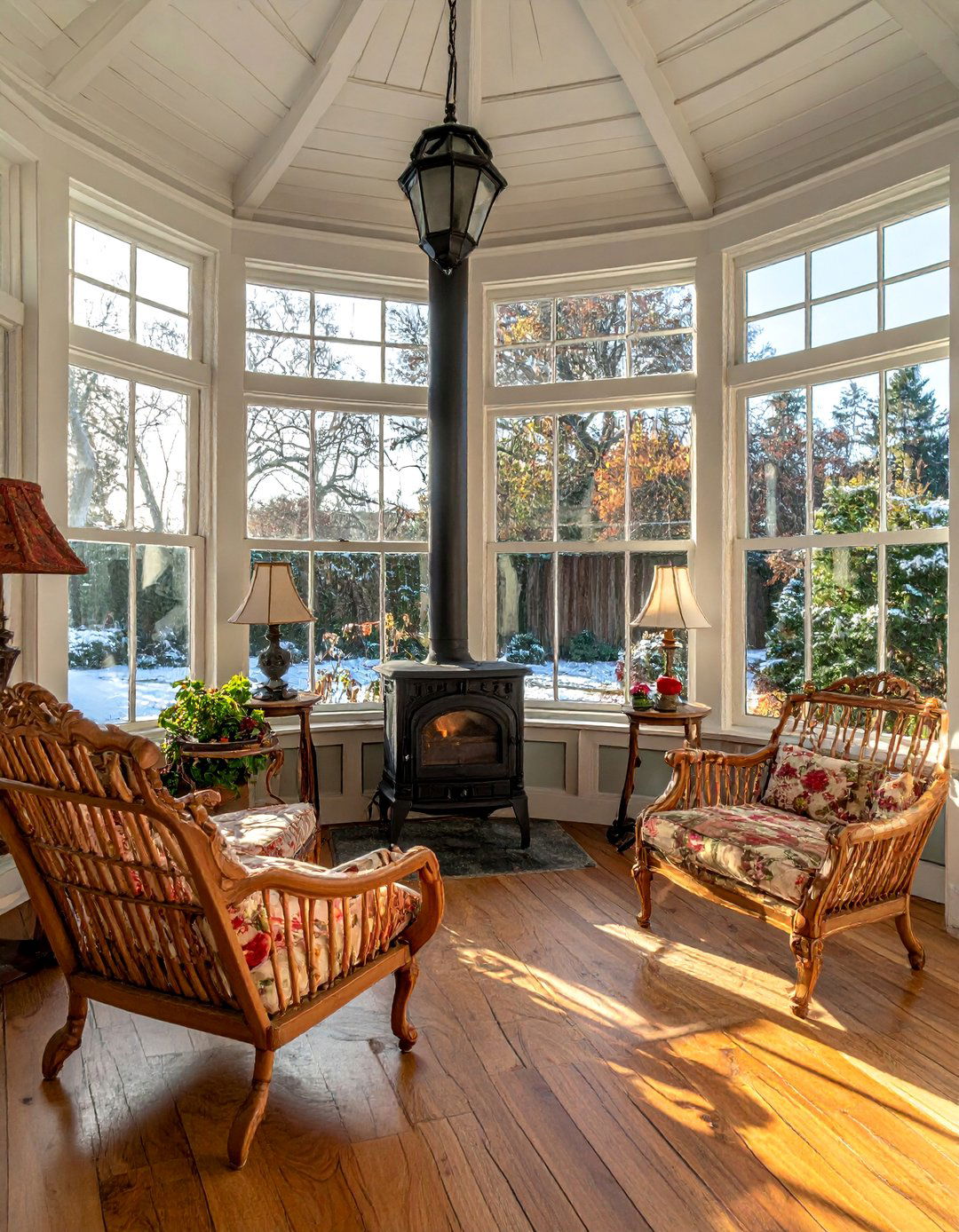
Adding a freestanding potbelly stove introduces both functional warmth and nostalgic charm to a Victorian sunroom, extending its use into the cooler months. These cast-iron stoves were a common feature in the 19th century and their ornate, rounded design fits perfectly with the period aesthetic. Placing the stove in a central location allows it to radiate heat throughout the space, creating a cozy gathering spot on chilly days. The dark iron finish provides a striking contrast against the bright, light-filled room, making it a functional centerpiece that enhances the room's historic and inviting ambiance.
11. Victorian Sunroom with an Elegant Dining Setup
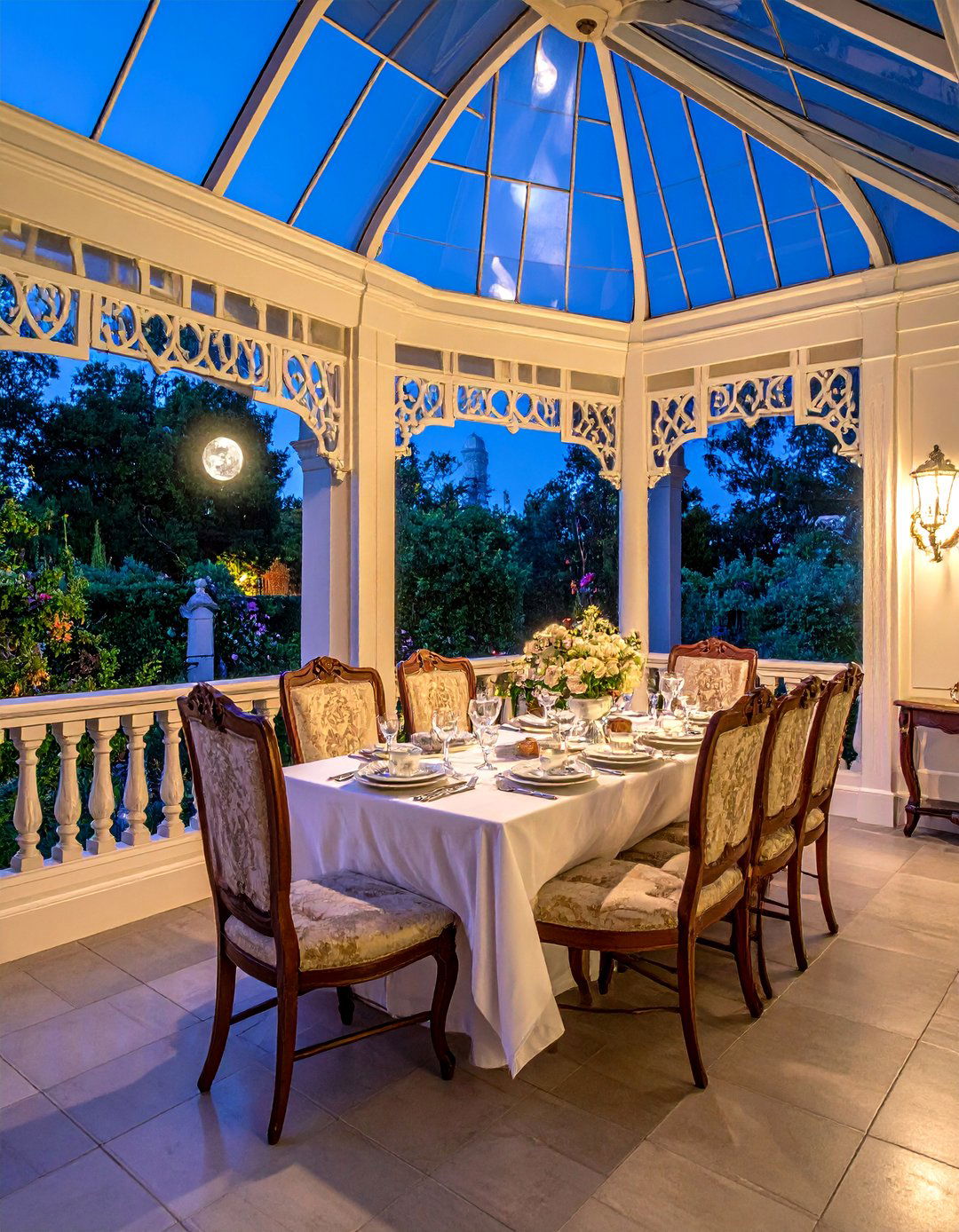
Transforming your Victorian sunroom into an elegant dining area allows you to host meals with a stunning garden backdrop. A long wooden or cast-iron table can serve as the centerpiece, surrounded by classic dining chairs. For a true period feel, dress the table with fine linens, antique silverware, and a floral centerpiece freshly picked from the garden. The surrounding glass walls make diners feel as though they are eating alfresco, while providing protection from the elements. This setup is perfect for brunches, afternoon teas, or intimate dinner parties, creating unforgettable experiences in a beautiful, light-filled setting.
12. Victorian Sunroom Designed as a Writer's Retreat
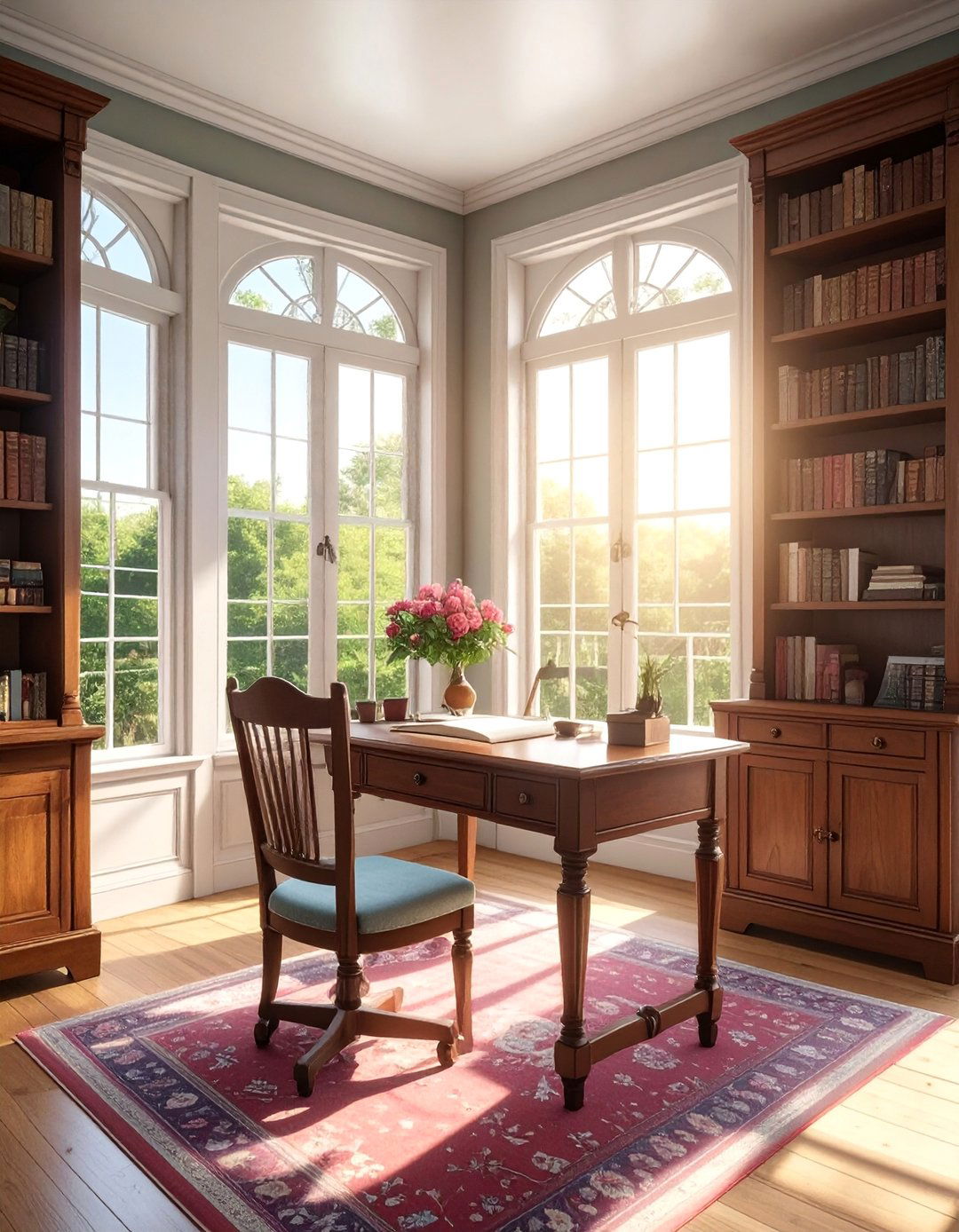
A Victorian sunroom makes an inspirational setting for a writer's retreat or home office. The abundance of natural light is ideal for focused work, while the views of nature can help stir creativity. Furnish the space with a classic wooden writing desk, a comfortable chair, and tall bookshelves filled with literary classics. A small armchair in a corner provides a spot for reading and contemplation. The quiet, conservatory-like atmosphere helps minimize distractions, creating a peaceful sanctuary where one can write, study, or simply think, surrounded by the beauty of the outdoors and timeless architectural elegance.
13. Victorian Sunroom Adorned with Climbing Vines
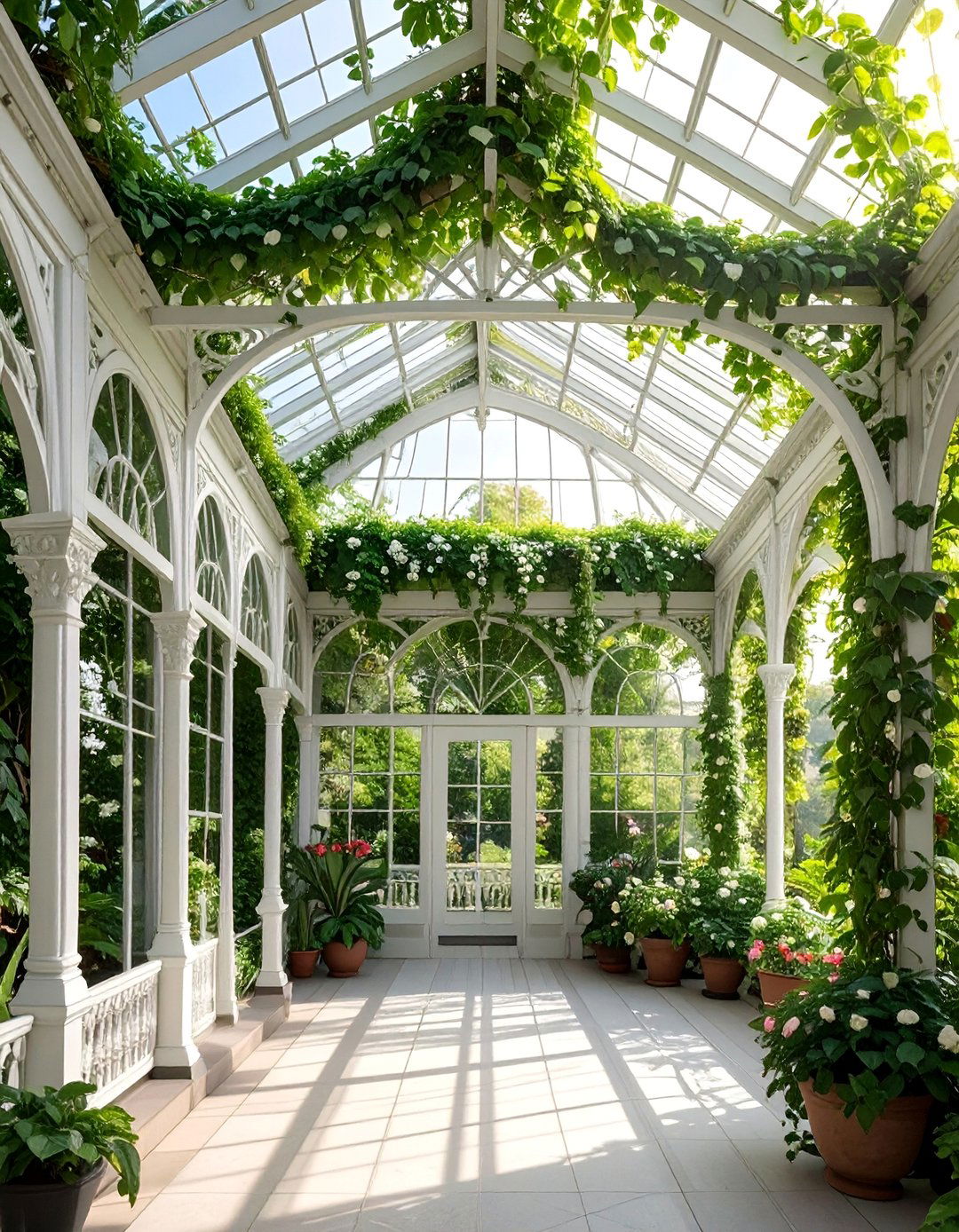
Training climbing vines to grow along the interior framework of a Victorian sunroom enhances its garden-like feel and softens the architectural lines. Plants like jasmine, bougainvillea, or ivy can be encouraged to weave their way up support posts and across ceiling beams, creating a natural green canopy. This living decoration adds a touch of romantic, old-world charm, making the space feel like a secret garden. The fragrant blossoms of flowering vines can also fill the room with a delightful scent. This approach blurs the line between the cultivated garden outside and the living space within.
14. Victorian Sunroom with a White-on-White Color Scheme
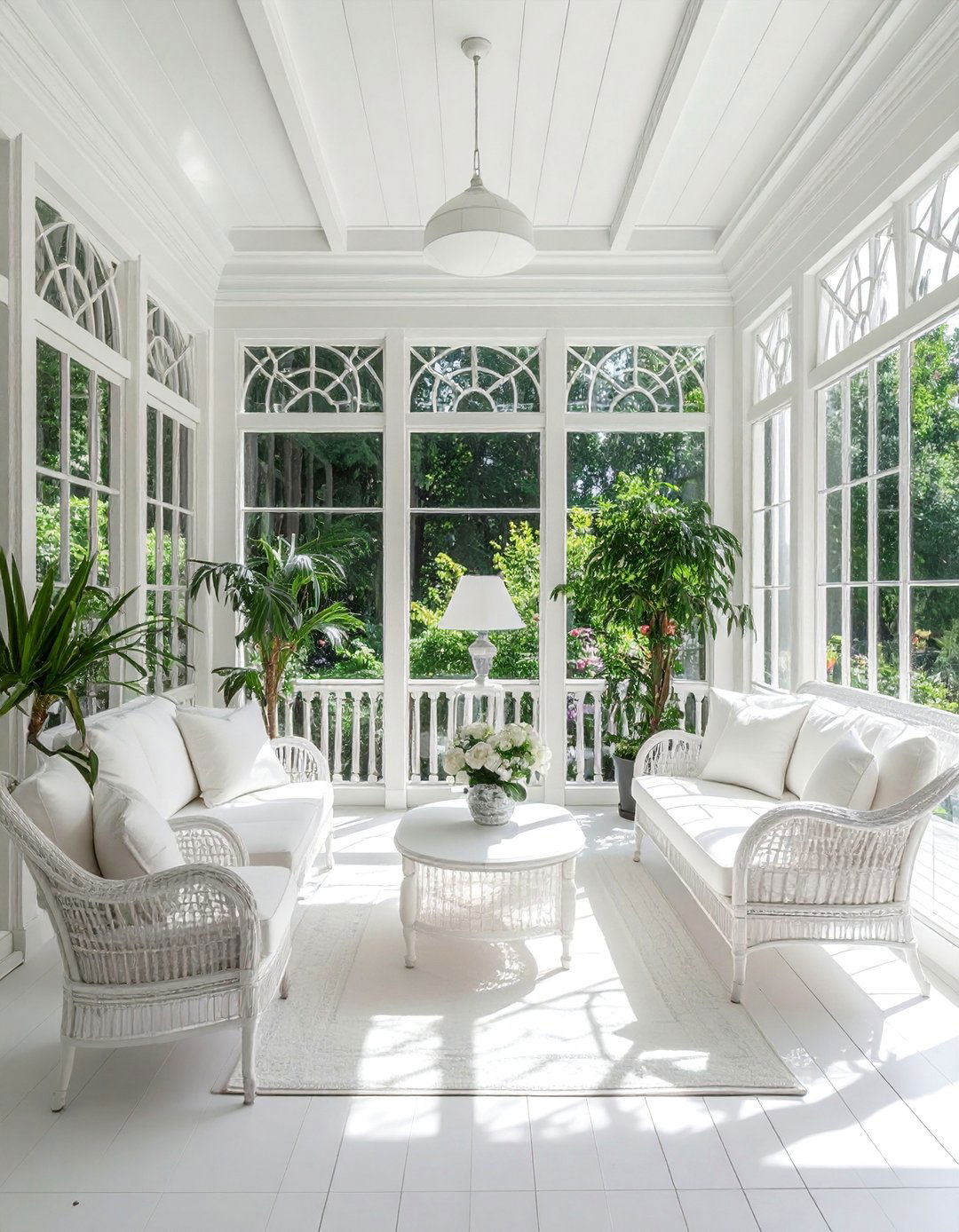
A white-on-white color scheme brings a fresh, airy, and contemporary feel to a classic Victorian sunroom. Painting the framework, walls, and even the floor in varying shades of white enhances the sense of light and space, making the room feel larger and brighter. This monochromatic palette allows the vibrant green of the plants and the colors of the outdoor garden to become the main focal points. White wicker or painted wood furniture with neutral-toned cushions completes the serene look. This clean and timeless approach highlights the beautiful architectural details of the sunroom while creating a calm, peaceful retreat.
15. Victorian Sunroom Featuring Elegant Drapery
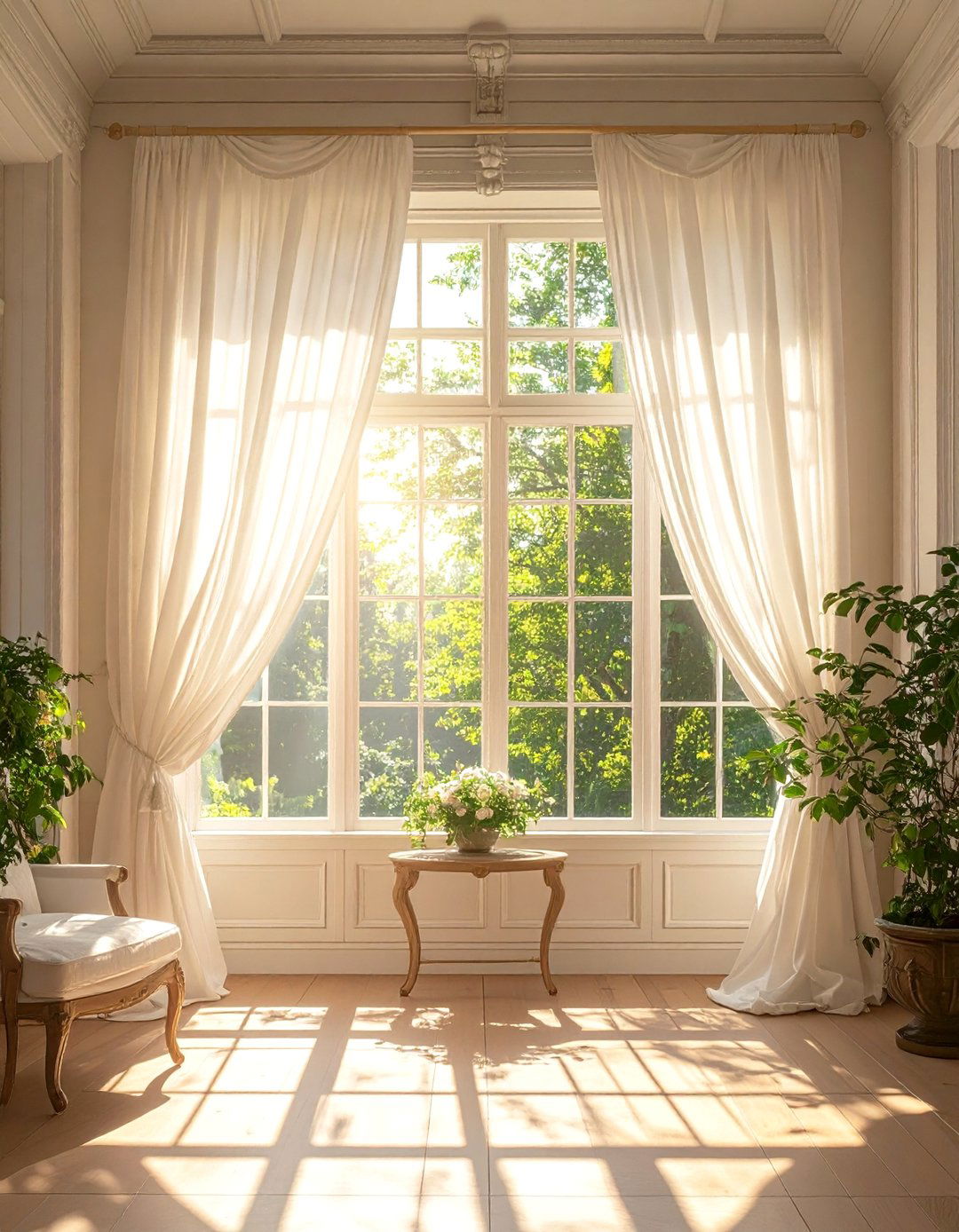
While the goal of a sunroom is to let light in, elegant drapery can add softness, privacy, and a touch of drama. Long, flowing curtains made from lightweight materials like linen or sheer cotton can be hung to frame the windows without obstructing the view. When drawn, they can help diffuse harsh midday sun and create a more intimate atmosphere in the evening. Choosing fabrics with subtle floral or damask patterns can reinforce the Victorian aesthetic. Tie-backs or swags can be used to pull the curtains aside in a decorative way, adding a layer of refined sophistication.
16. Victorian Sunroom with a Cozy Reading Nook
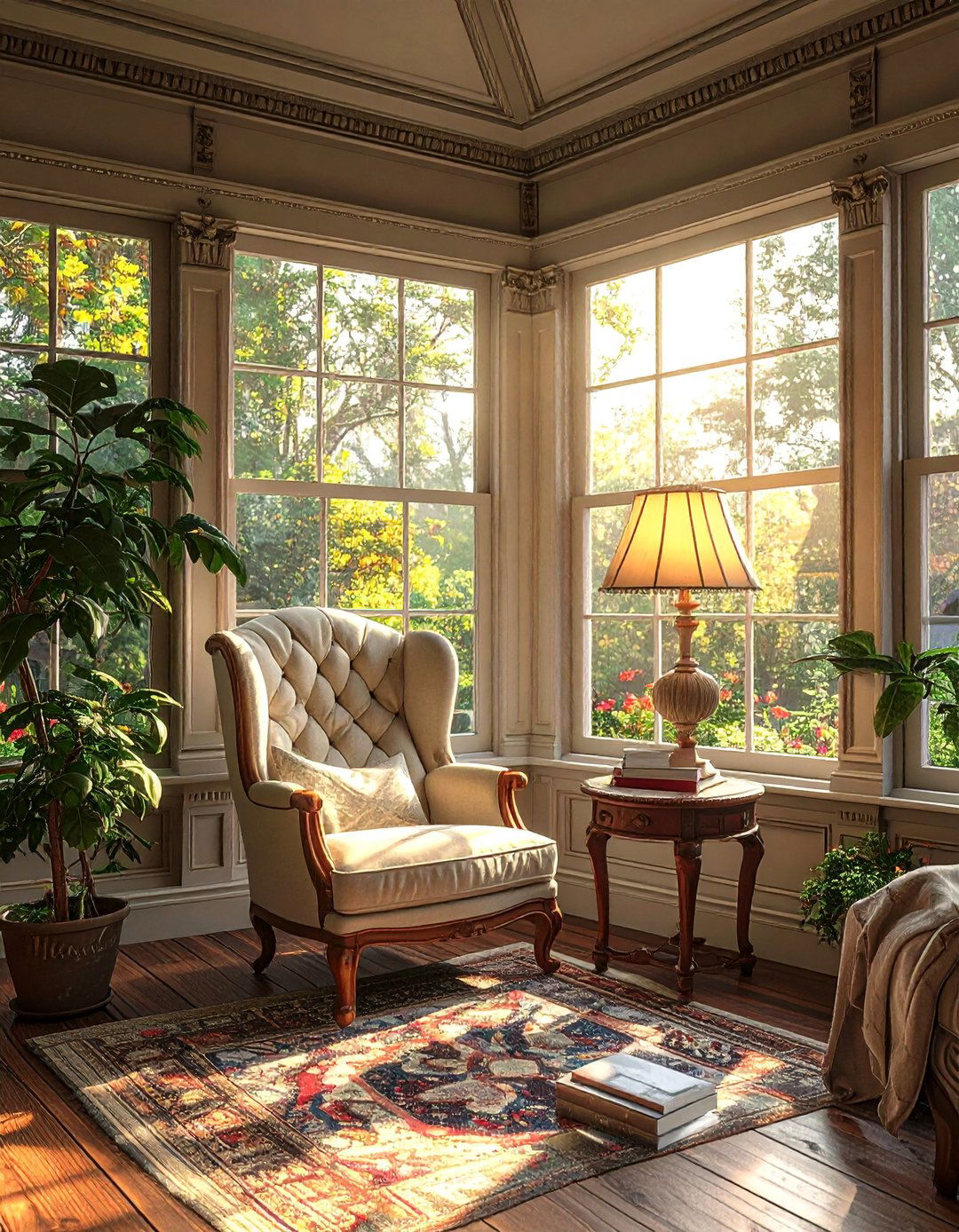
Carving out a dedicated reading nook is a perfect way to utilize the peaceful ambiance of a Victorian sunroom. Place a comfortable, overstuffed armchair or a small chaise lounge in a corner with the best view and light. Add a small side table to hold a cup of tea and a book, and a floor lamp with a classic design for evening reading. A soft throw blanket and a plush cushion enhance the comfort factor. This simple arrangement creates an inviting sanctuary where you can escape from the demands of the day and lose yourself in a good story.
17. Victorian Sunroom Accented with Terracotta Pots
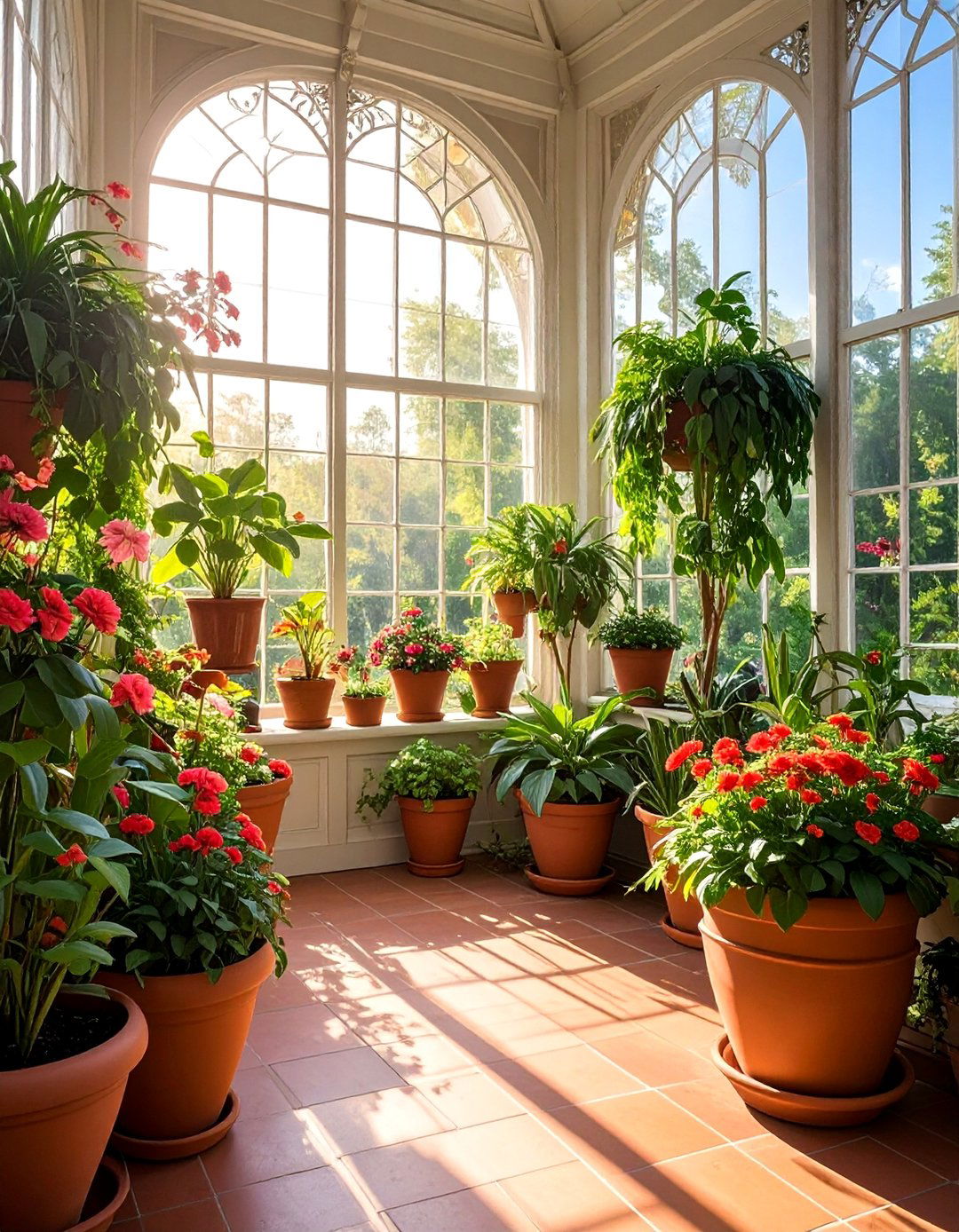
Using terracotta pots of various shapes and sizes is a simple yet effective way to achieve an authentic Victorian conservatory look. The warm, earthy tones of the clay complement both the green foliage of the plants and the architectural elements of the room. Grouping pots of different heights on the floor, on tiered stands, or along windowsills creates visual interest and a sense of abundance. Over time, the pots will develop a natural patina, adding to the rustic, timeless charm. This classic choice connects the space to traditional gardening practices and enhances its role as a plant-filled sanctuary.
18. Victorian Sunroom with a Central Water Feature
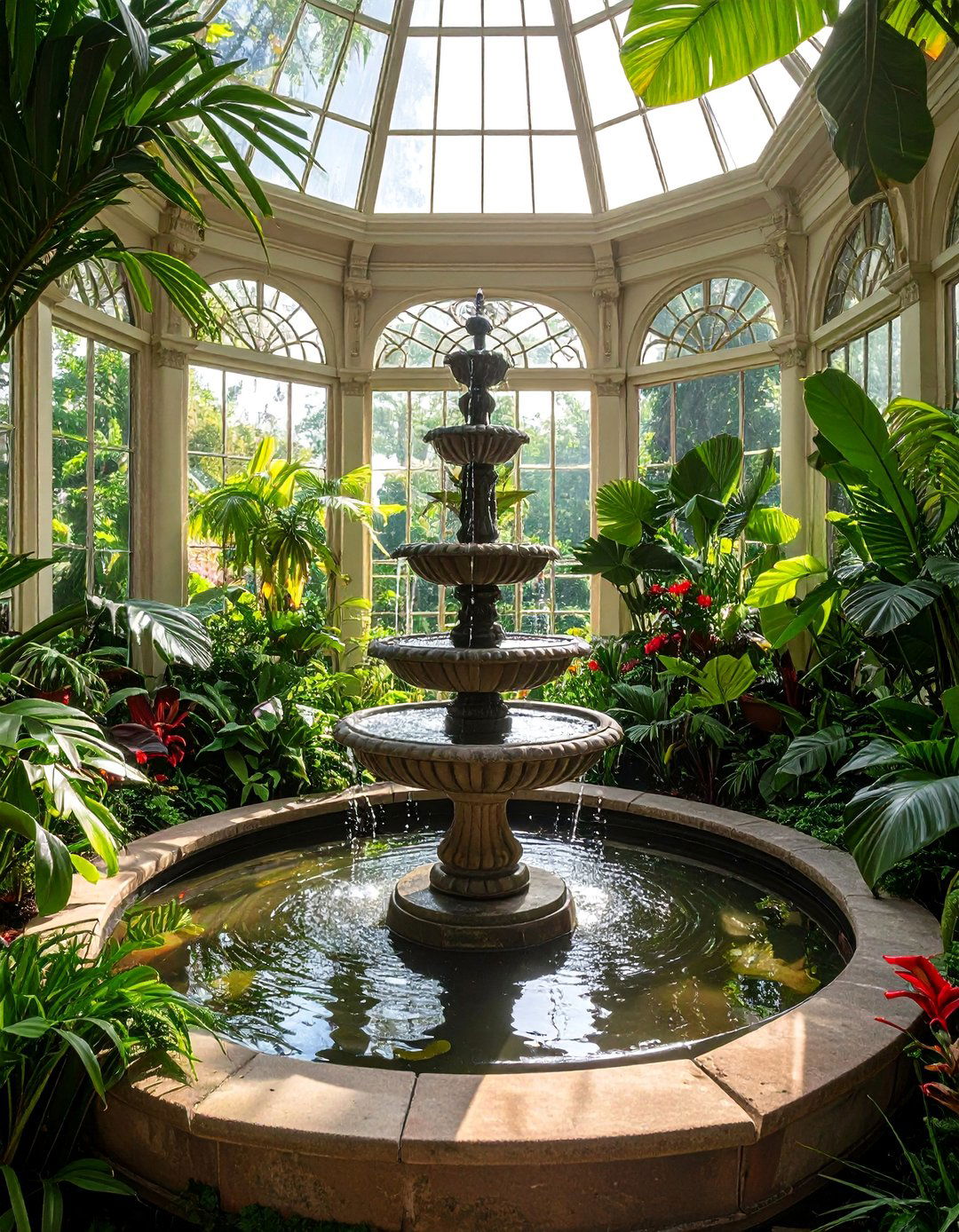
A small, central water feature, such as a tiered fountain or a simple bubbling urn, can transform a Victorian sunroom into a multi-sensory oasis. The gentle sound of trickling water promotes relaxation and tranquility, masking outside noises and creating a peaceful atmosphere. The fountain can also help increase the humidity in the room, which is beneficial for many tropical plants. A classic design made from cast stone or metal will complement the period style of the sunroom, serving as an elegant focal point that engages both sight and sound for a truly immersive retreat.
19. Victorian Sunroom with a Checkered Floor Pattern
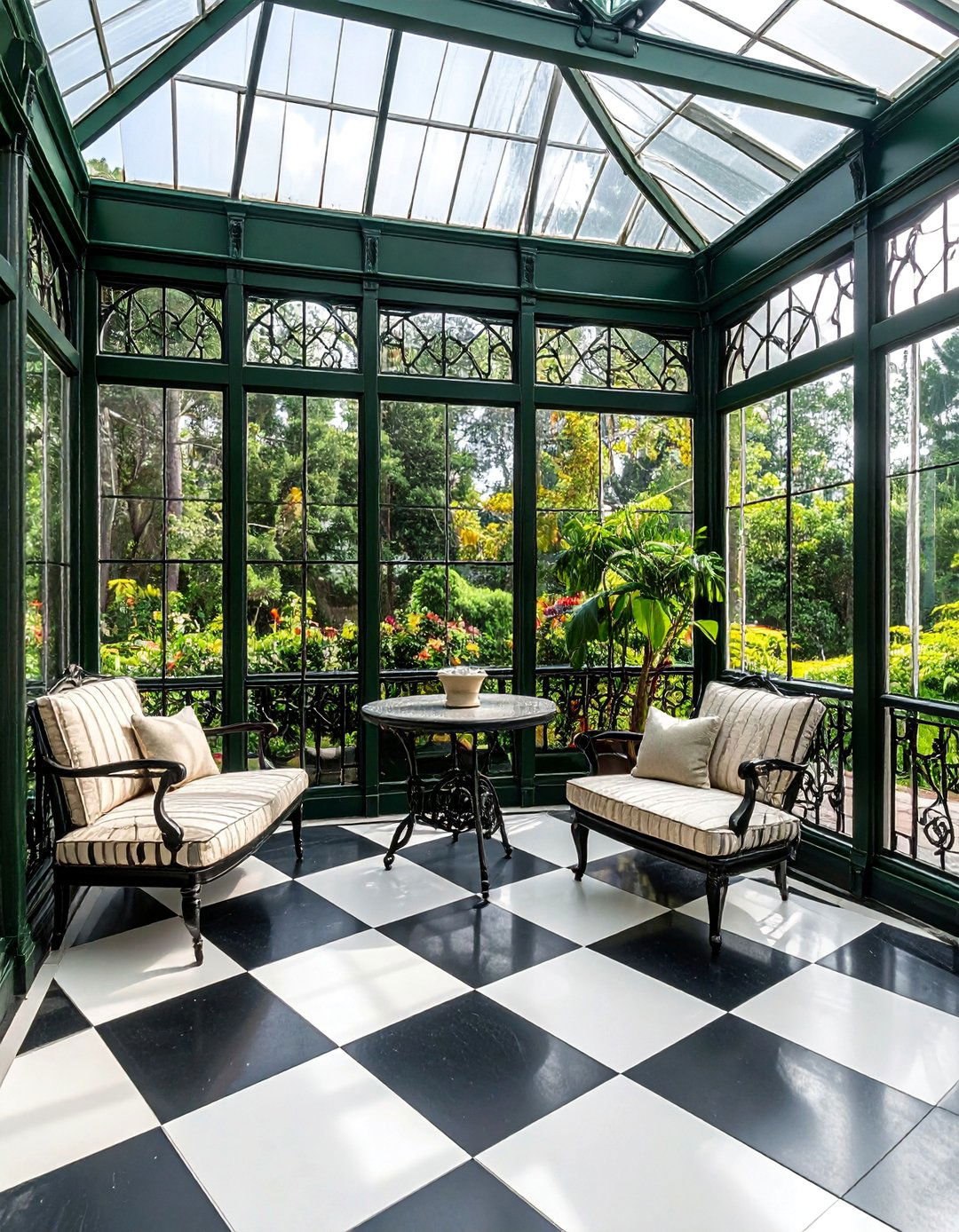
A classic black and white checkered floor brings a bold, graphic element to a Victorian sunroom. This timeless design was popular in grand entryways and conservatories of the era, evoking a sense of formal elegance. The pattern can be created using durable materials like ceramic tile, marble, or even painted wood. The sharp contrast of the black and white squares provides a striking foundation that makes the colors of plants and furnishings pop. This flooring choice is a statement in itself, grounding the airy glass structure with a touch of sophisticated, historical drama that never goes out of style.
20. Victorian Sunroom Illuminated by a Crystal Chandelier
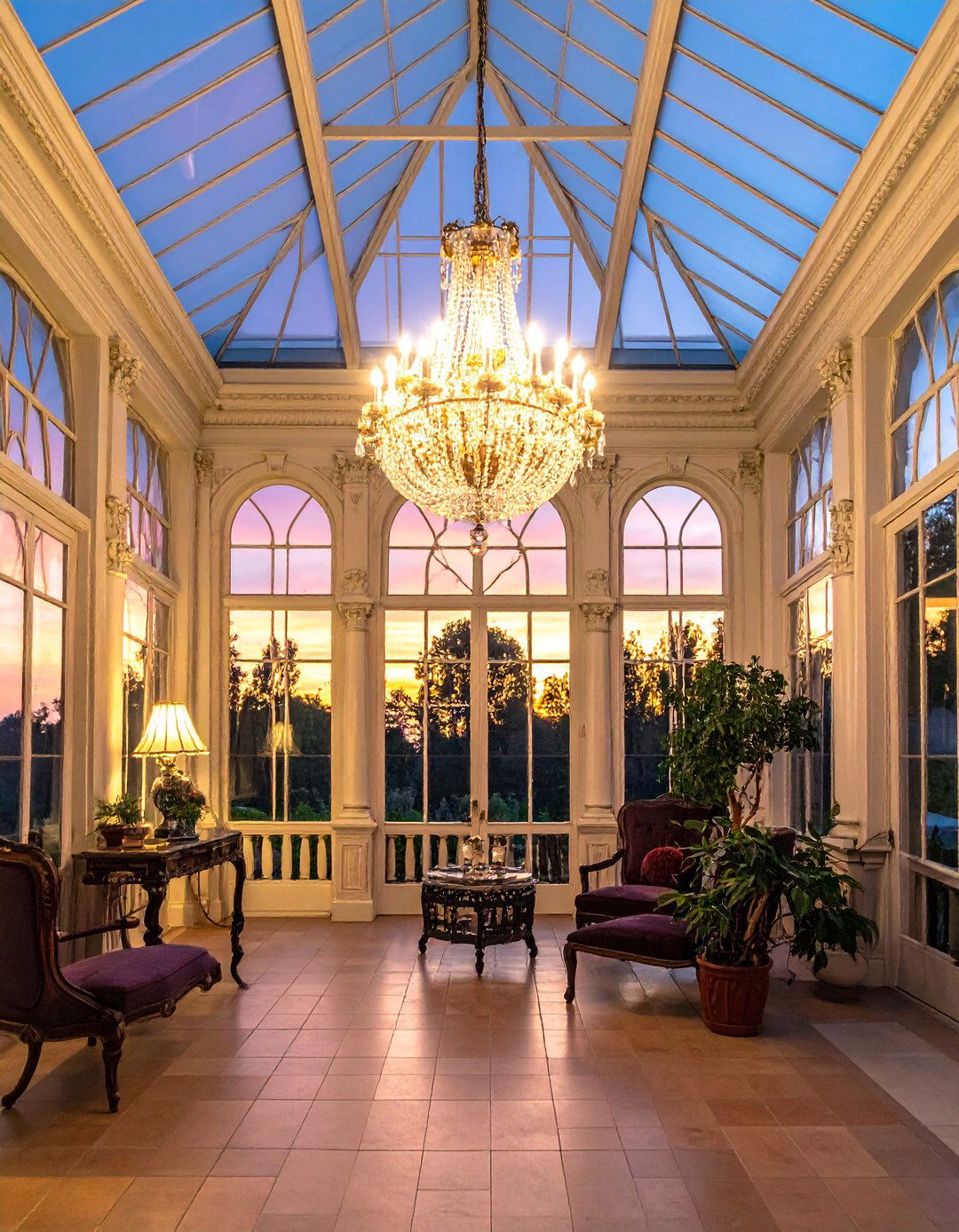
Hanging a crystal chandelier from the center of the ceiling adds a touch of unexpected glamour and opulence to a Victorian sunroom. During the day, the crystals will catch the natural sunlight and refract it around the room, creating sparkling, rainbow-like patterns. In the evening, the chandelier provides elegant, ambient lighting, turning the space into a magical setting for entertaining or relaxation. This luxurious fixture contrasts beautifully with the more rustic elements like plants and wicker furniture, elevating the entire room and reinforcing the romantic, decorative spirit of the Victorian era.
21. Victorian Sunroom as an Artist's Studio
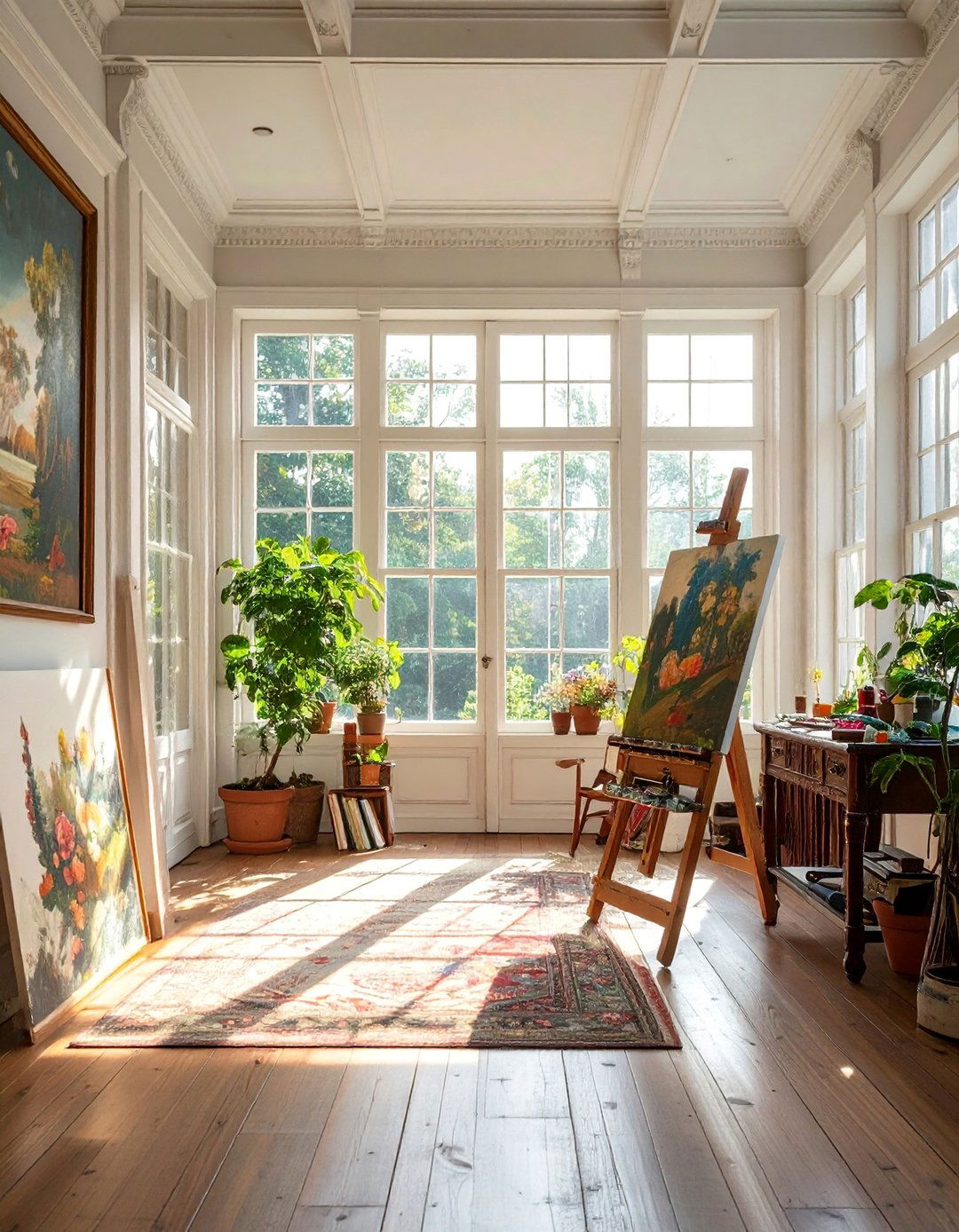
The exceptional natural light in a Victorian sunroom makes it the perfect location for an artist's studio. The clear, bright, and consistent light is ideal for painting, drawing, or sculpting. Set up an easel near a large window, along with a work table for supplies and a stool. The inspiring views of the garden can provide endless subject matter. The room's practical tiled or wooden floor is also easy to clean in case of spills. This use of the space creates a dedicated creative haven, allowing an artist to work while being fully immersed in a beautiful and light-filled environment.
22. Victorian Sunroom with Built-In Window Seating
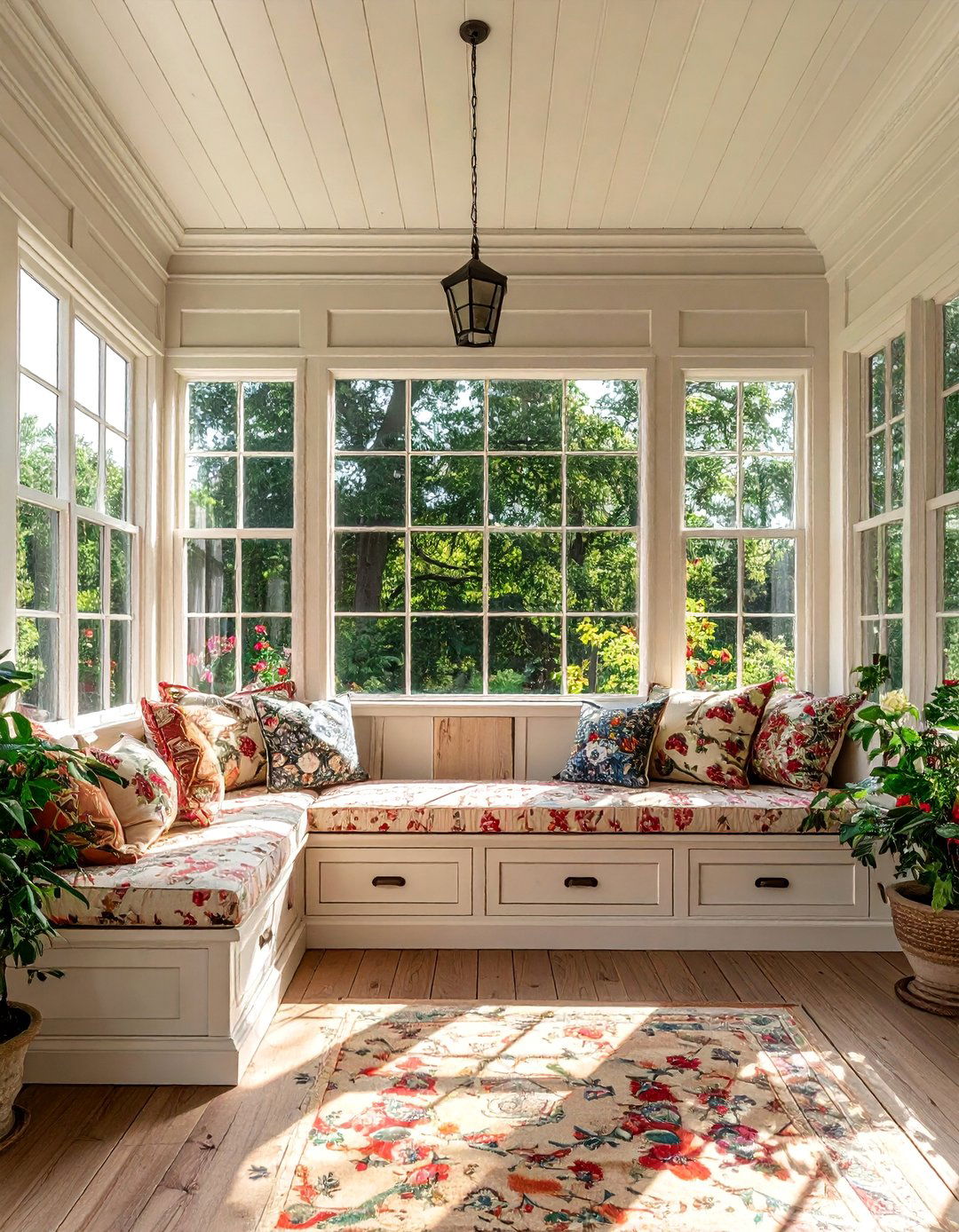
Incorporating built-in window seating is a smart and stylish way to maximize space and functionality in a Victorian sunroom. A bench built along a bay window or a long wall provides ample seating without cluttering the room with extra furniture. Topped with thick, comfortable cushions in a period-appropriate fabric, it becomes the perfect spot for lounging, reading, or enjoying the view. The space underneath the bench can be designed with drawers or cabinets for hidden storage, ideal for stowing away garden tools, cushions, or blankets, keeping the room tidy and organized.
23. Victorian Sunroom Attached to a Kitchen
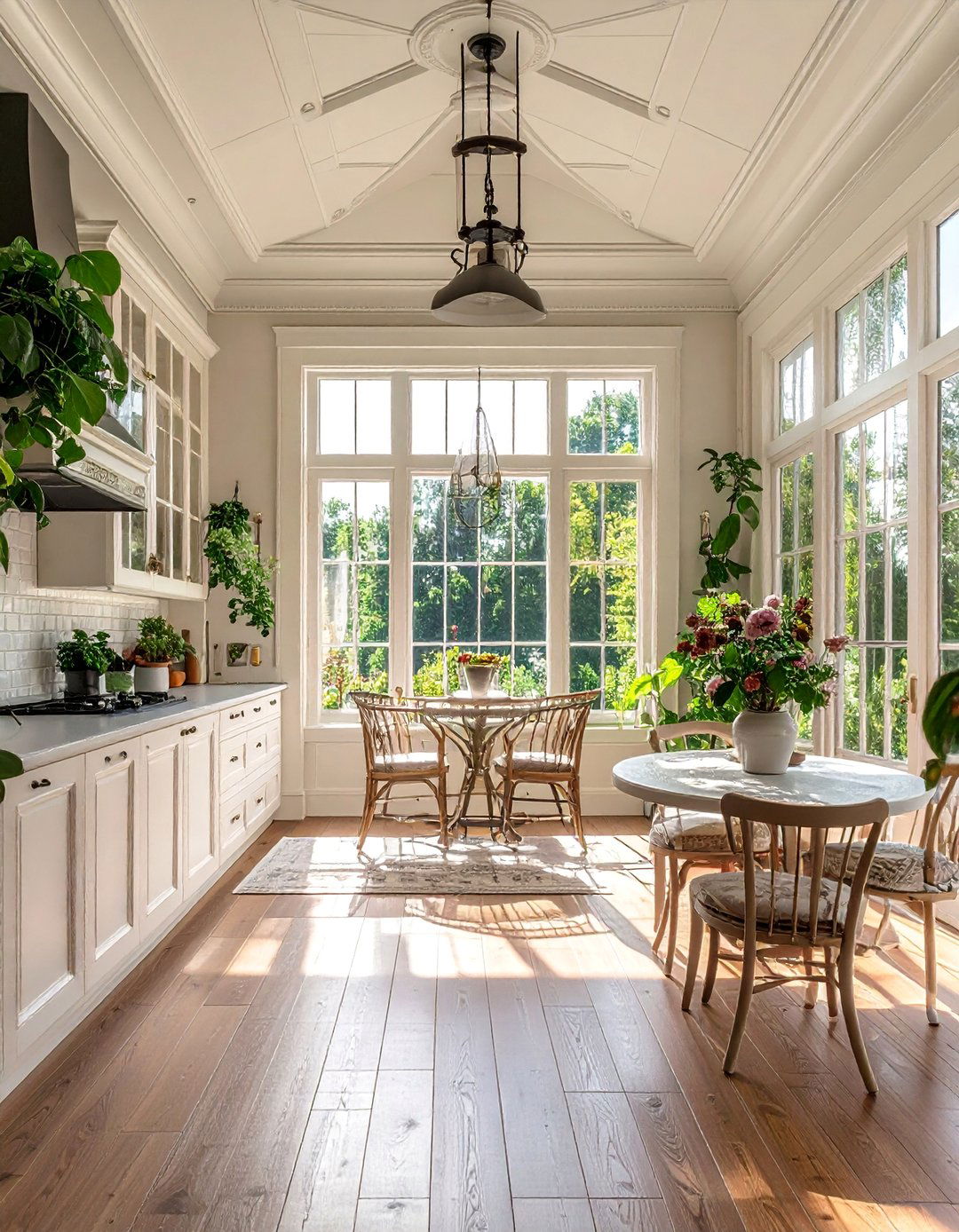
Connecting a Victorian sunroom to the kitchen creates a wonderfully bright and cheerful space for casual dining or morning coffee. This extension can serve as a breakfast nook, flooded with natural light to start the day. It also provides an ideal environment for growing a small indoor herb garden, with fresh ingredients just steps away from the cooking area. The transition from the functional kitchen to the garden-like sunroom creates a beautiful flow, blurring the lines between indoors and out. It’s a practical and charming addition that enhances daily routines with sunlight and garden views.
24. Victorian Sunroom Featuring Ornate Metal Plant Stands
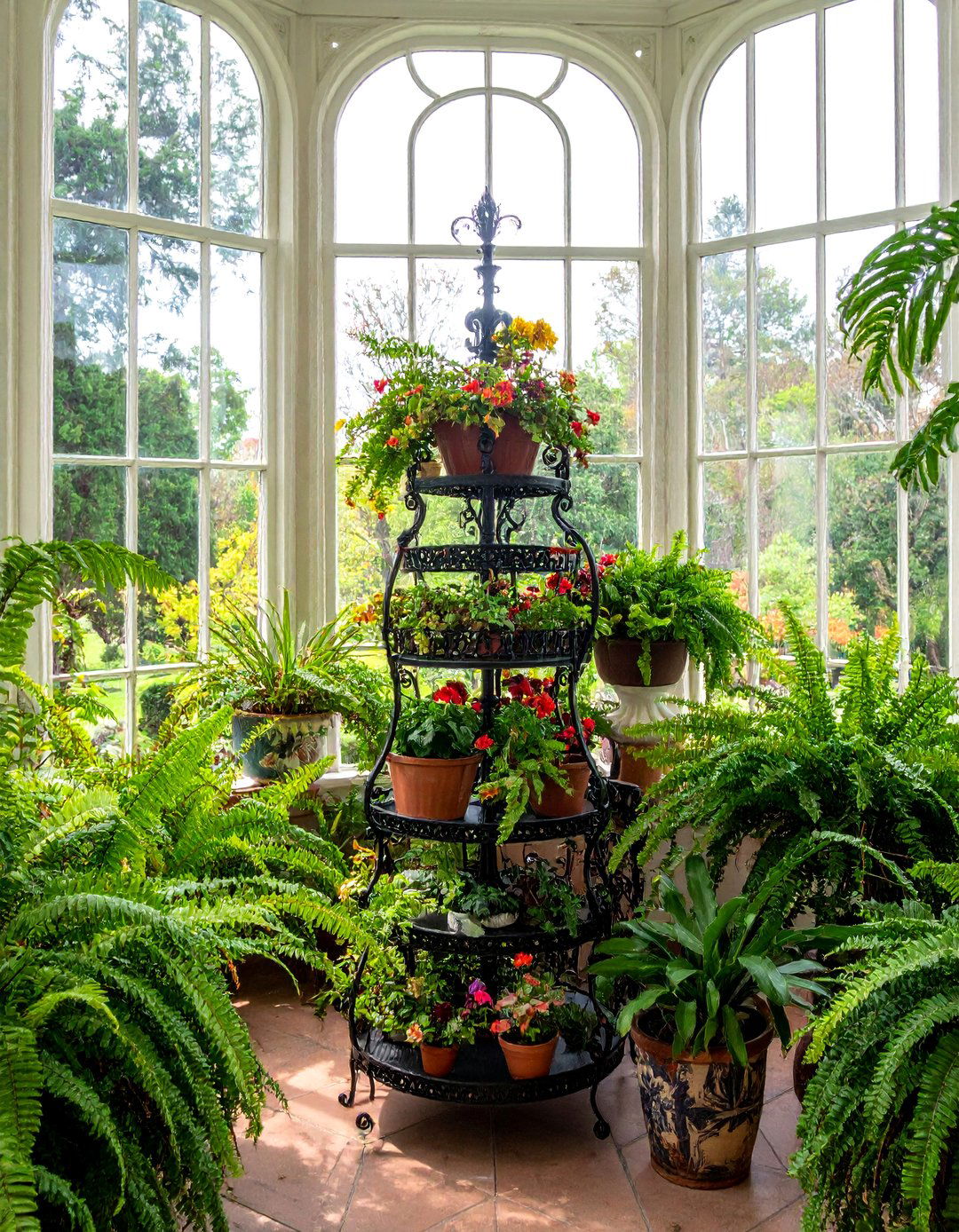
Elaborate, multi-tiered plant stands made from wrought or cast iron are a hallmark of the Victorian conservatory style. These stands allow you to display a large number of plants in a compact footprint, creating a lush, layered wall of greenery. Look for designs with intricate scrollwork, spiral staircases, or corner etageres that fit the period aesthetic. Painting them white or classic dark green can help them blend in or stand out as a decorative feature. These stands are not just functional; they are beautiful objects that add to the room's ornamental character and historical authenticity.
25. Victorian Sunroom with a Double-Door Garden Entrance
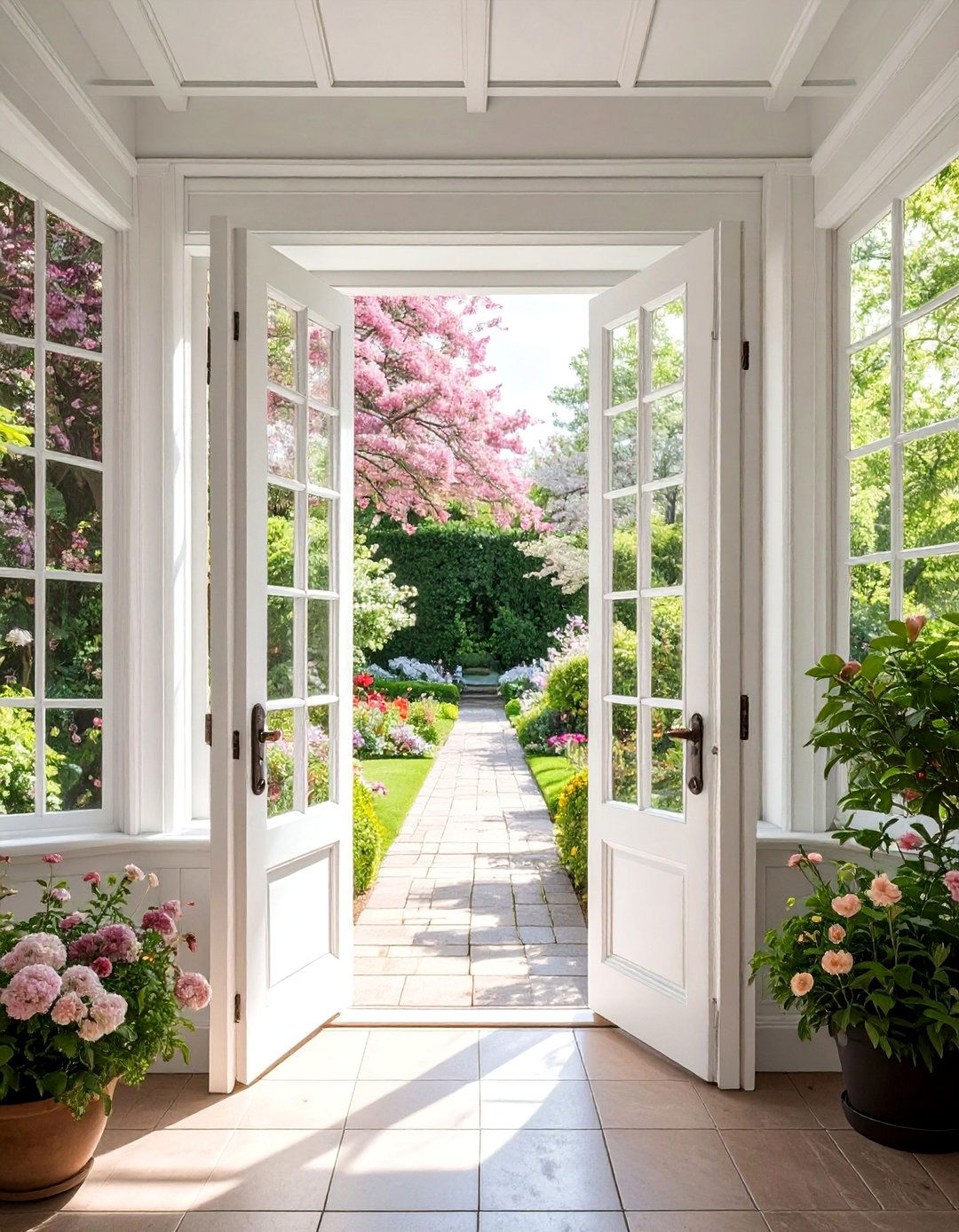
Installing a set of elegant double doors, often referred to as French doors, creates a grand entrance from the Victorian sunroom into the garden. These doors, typically featuring multiple glass panes, enhance the flow between the indoor and outdoor spaces and offer an unobstructed view even when closed. When opened wide on a warm day, they effectively merge the two areas, perfect for entertaining or simply enjoying a fresh breeze. This feature reinforces the sunroom’s purpose as a transitional space and adds a sense of symmetry and formal elegance to the overall design.
Conclusion:
Ultimately, a Victorian sunroom is a celebration of light, nature, and ornate design. Whether you embrace a traditional conservatory filled with exotic plants, a cozy reading nook, or an elegant dining space, the core elements remain the same: expansive glass, decorative framing, and a deep connection to the outdoors. By carefully selecting architectural details, furnishings, and a verdant plant collection, you can create a timeless and versatile retreat. This classic addition not only enhances your home's beauty and value but also provides a tranquil sanctuary for relaxation and enjoyment throughout the year.

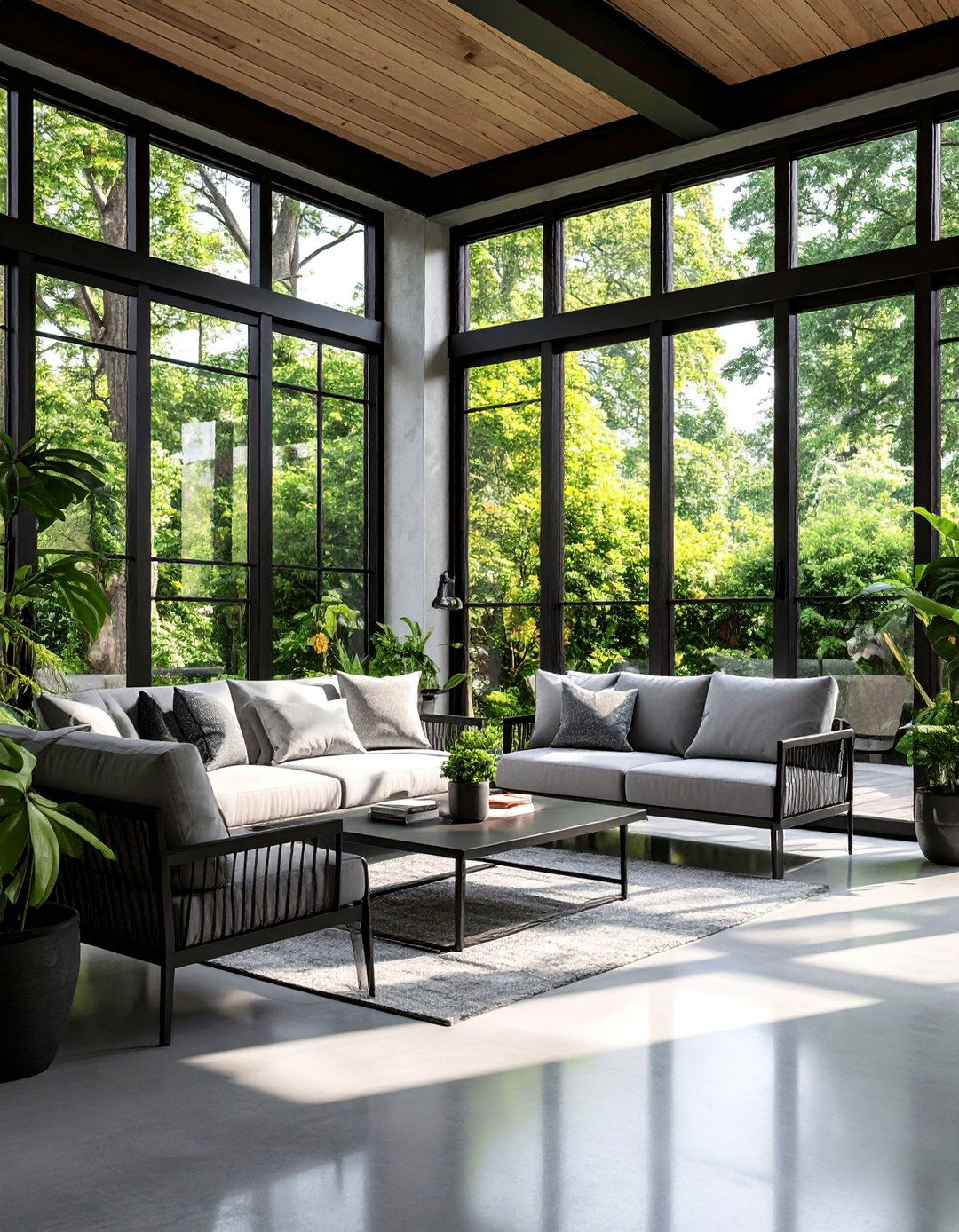
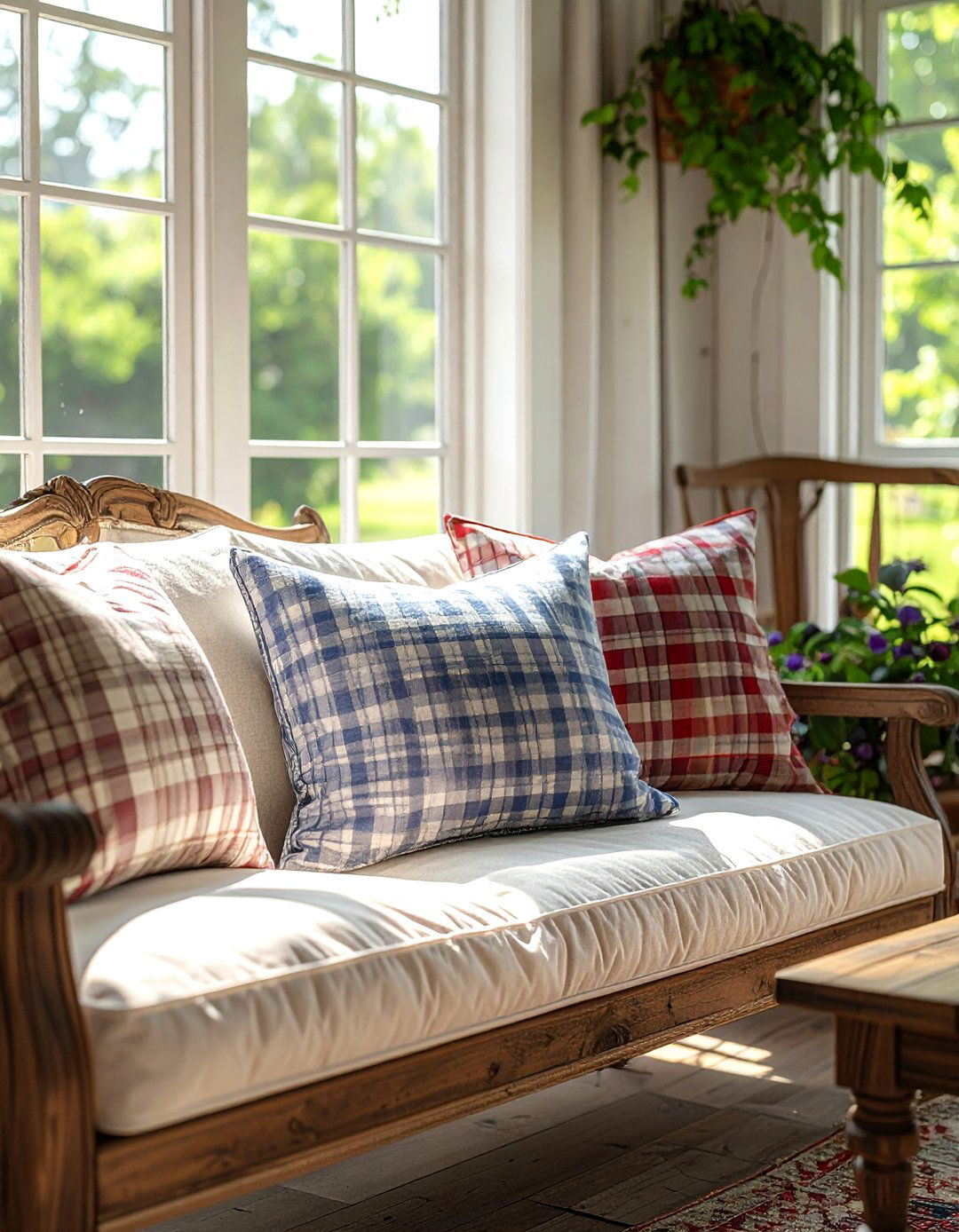
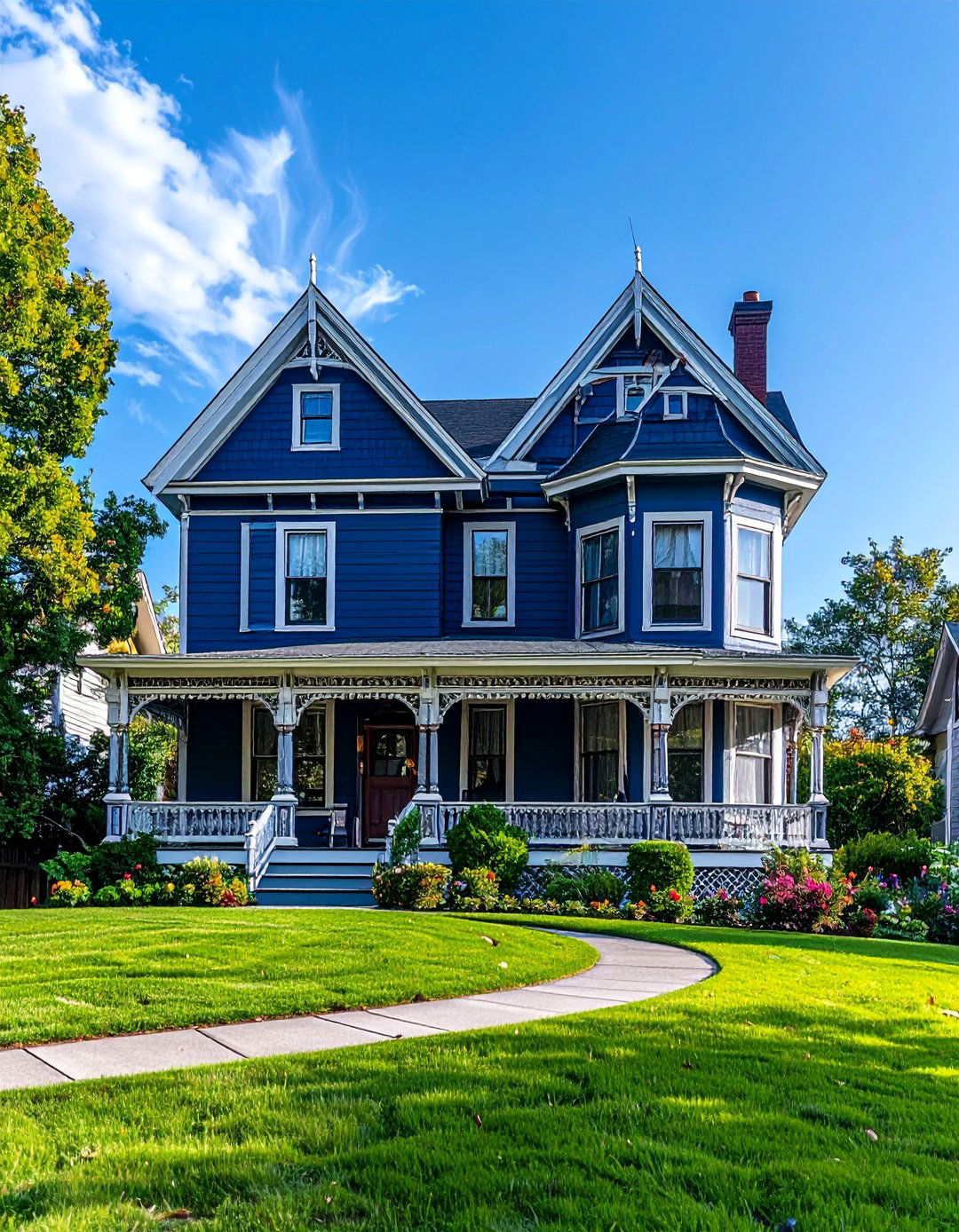
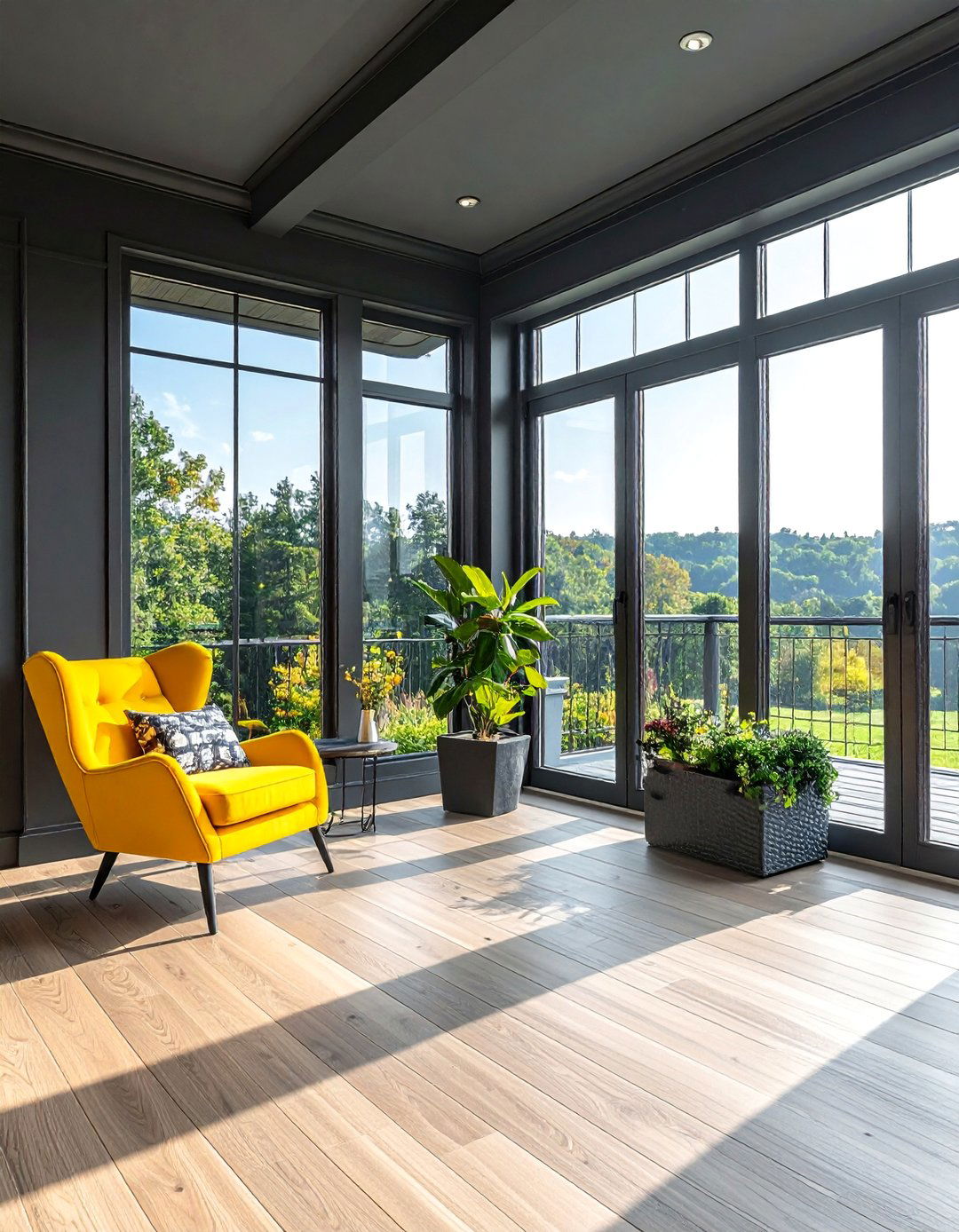
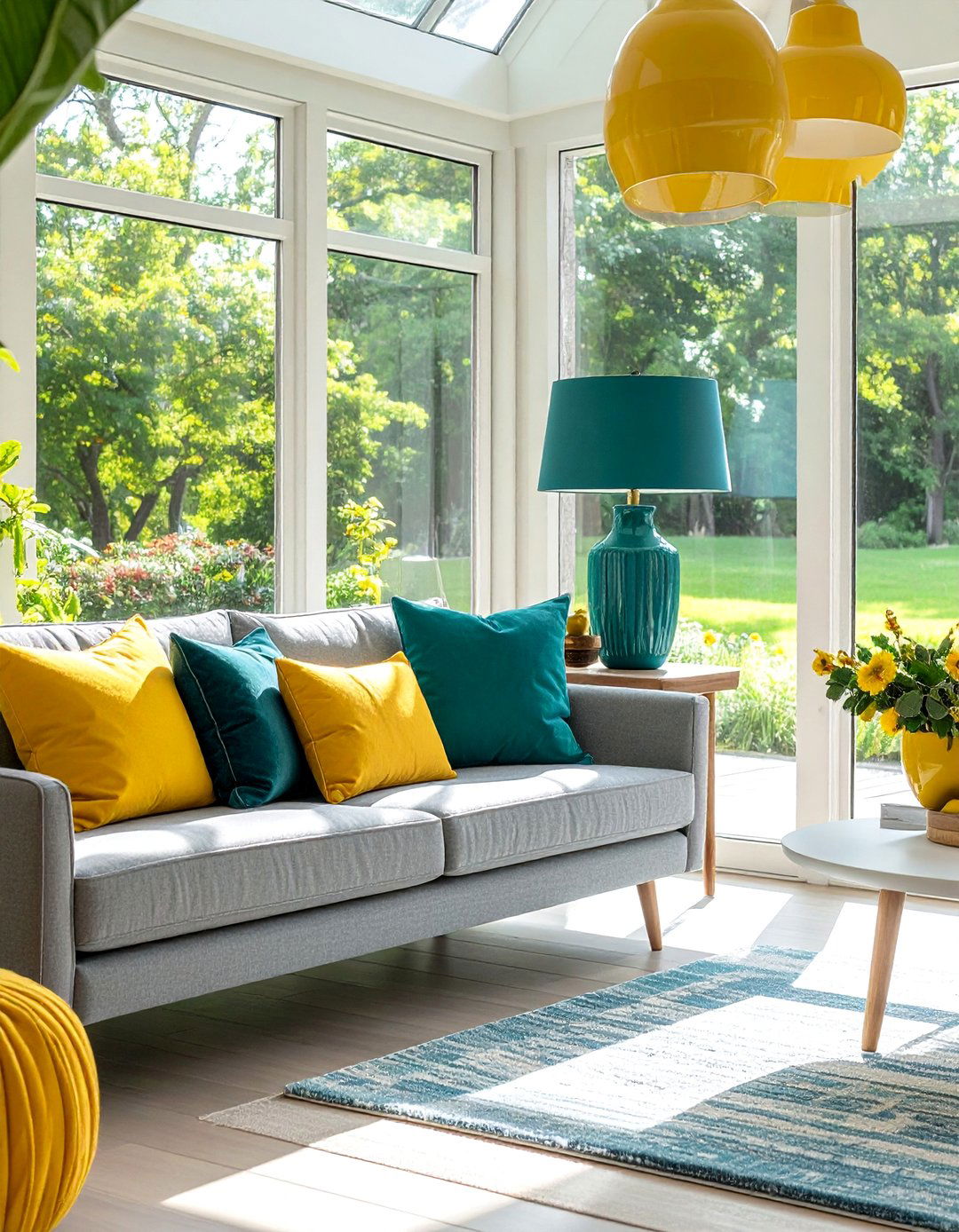
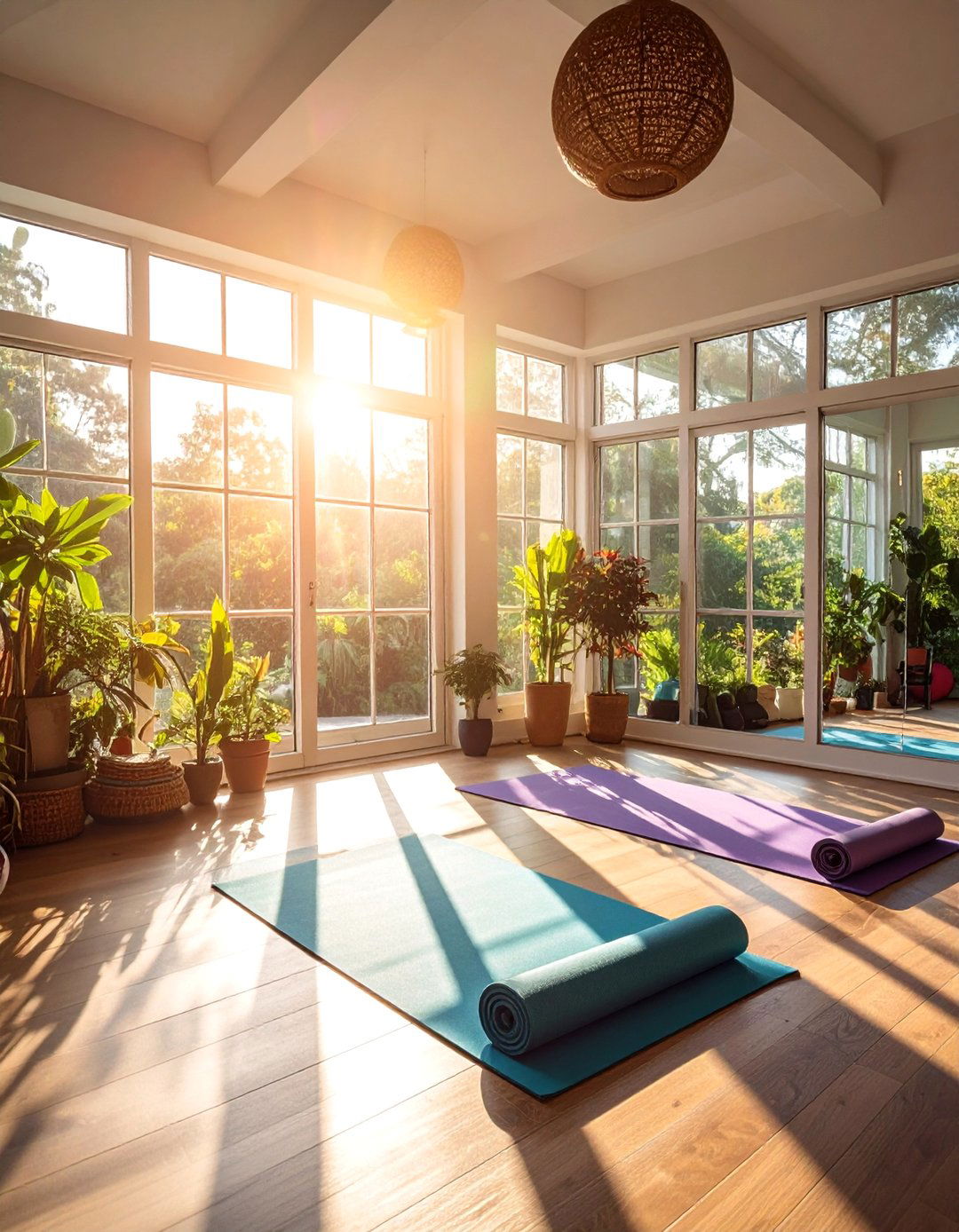
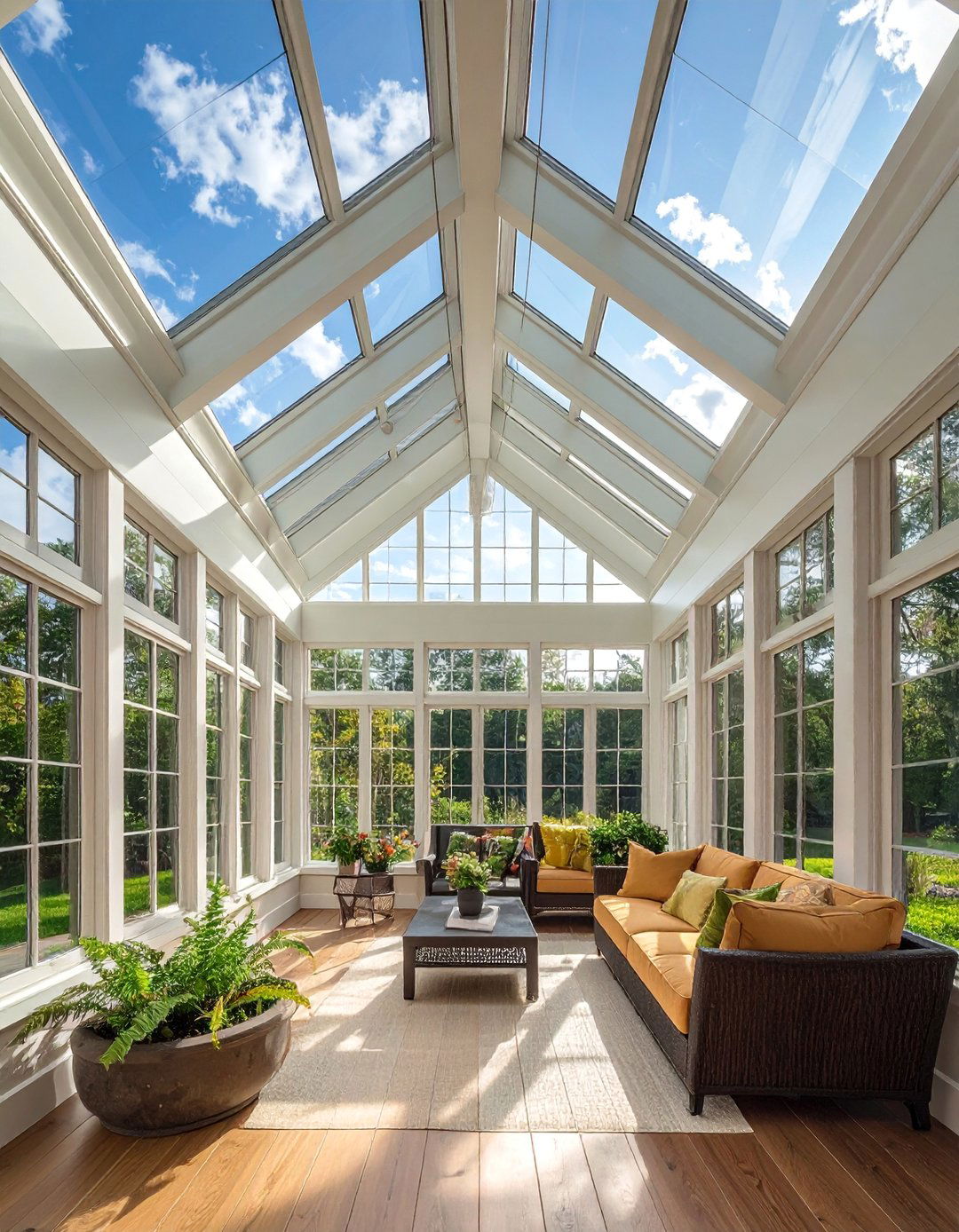
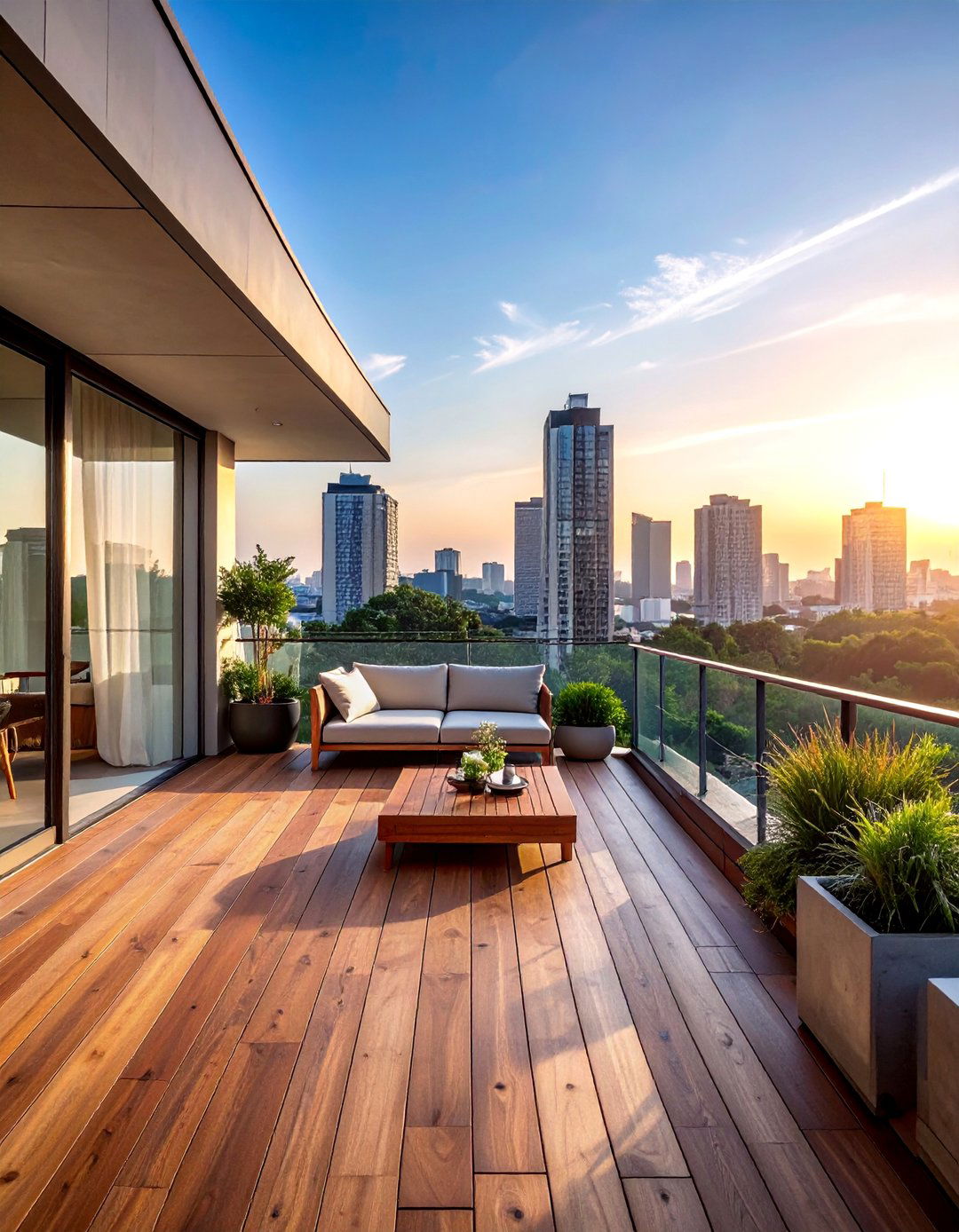
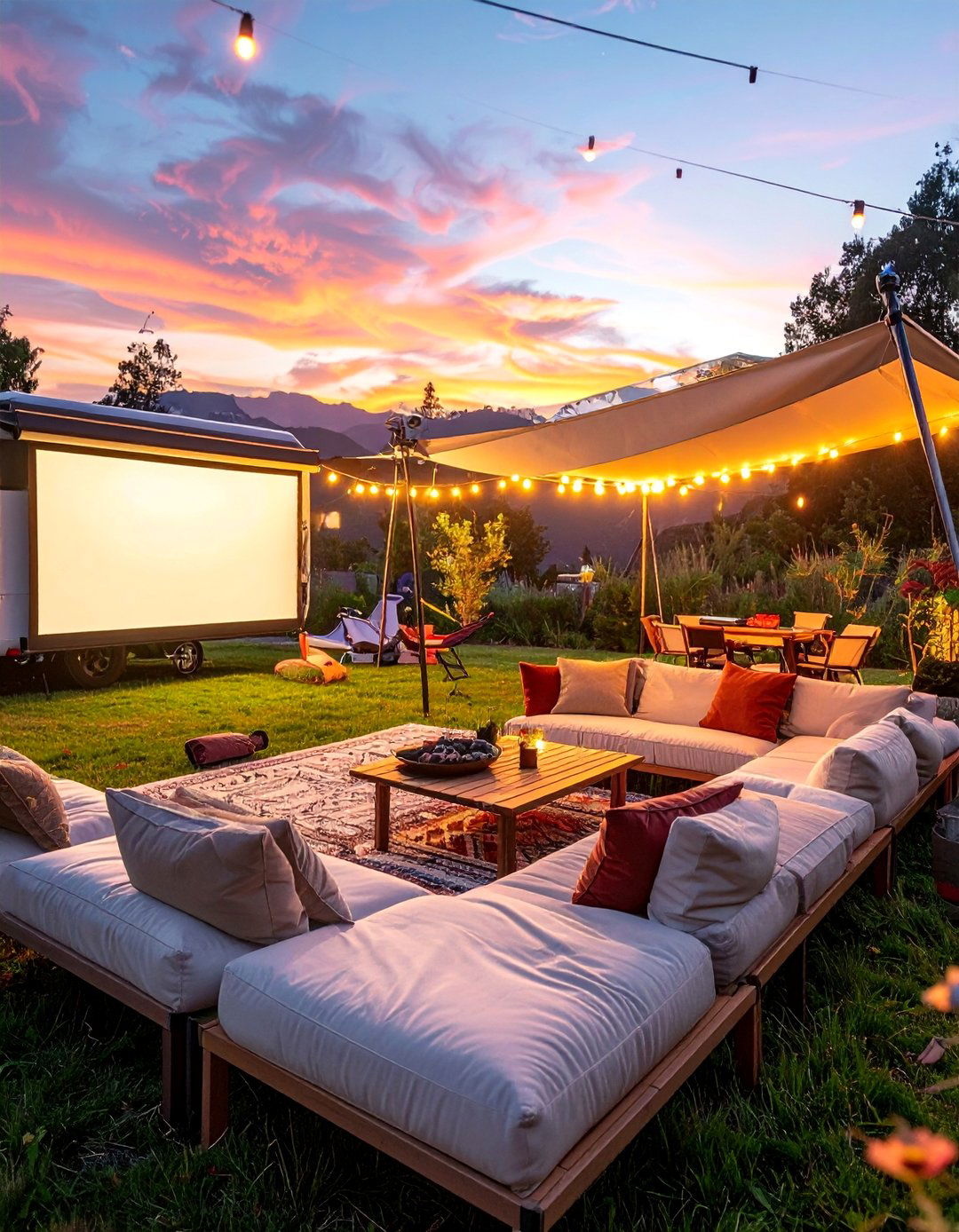
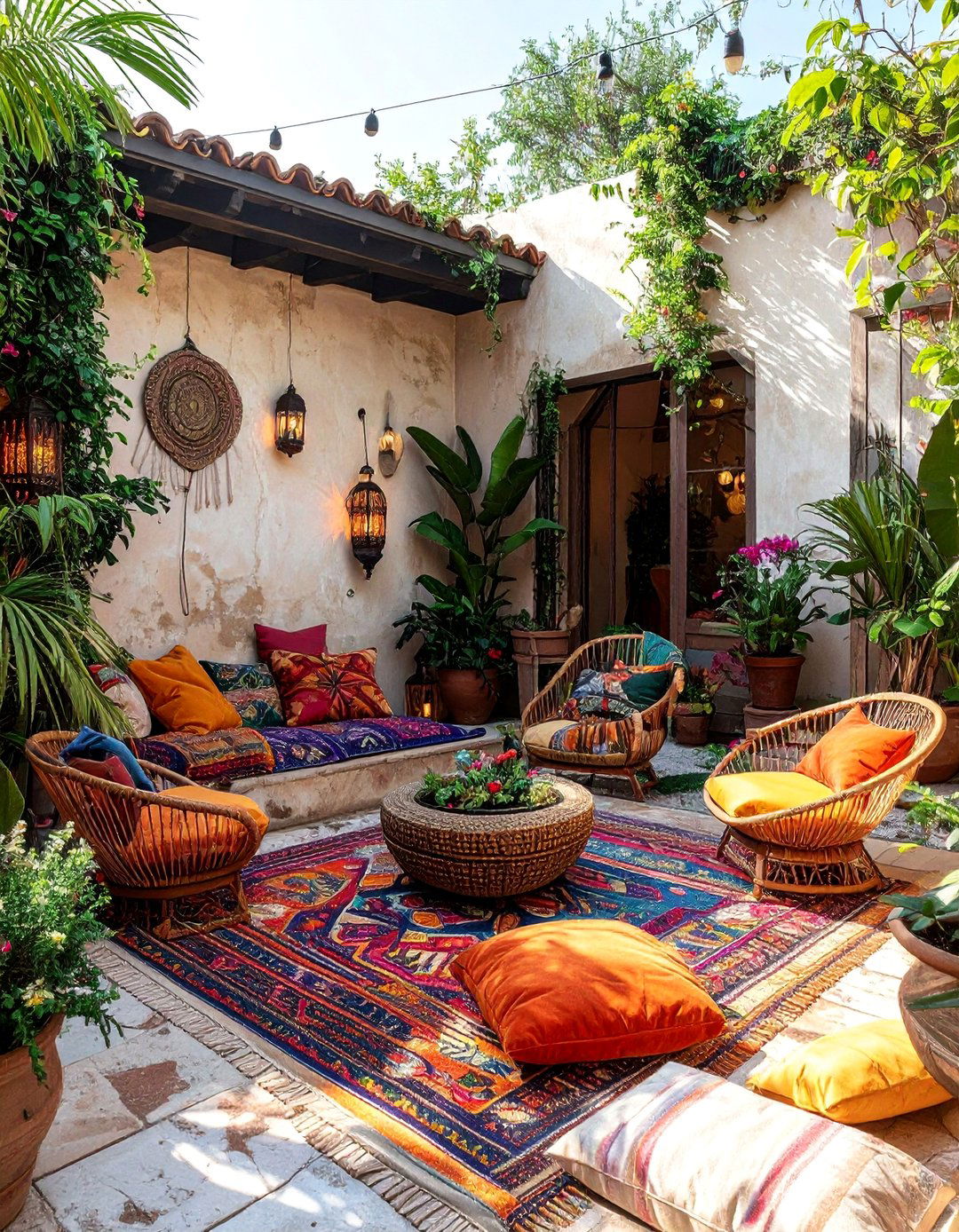
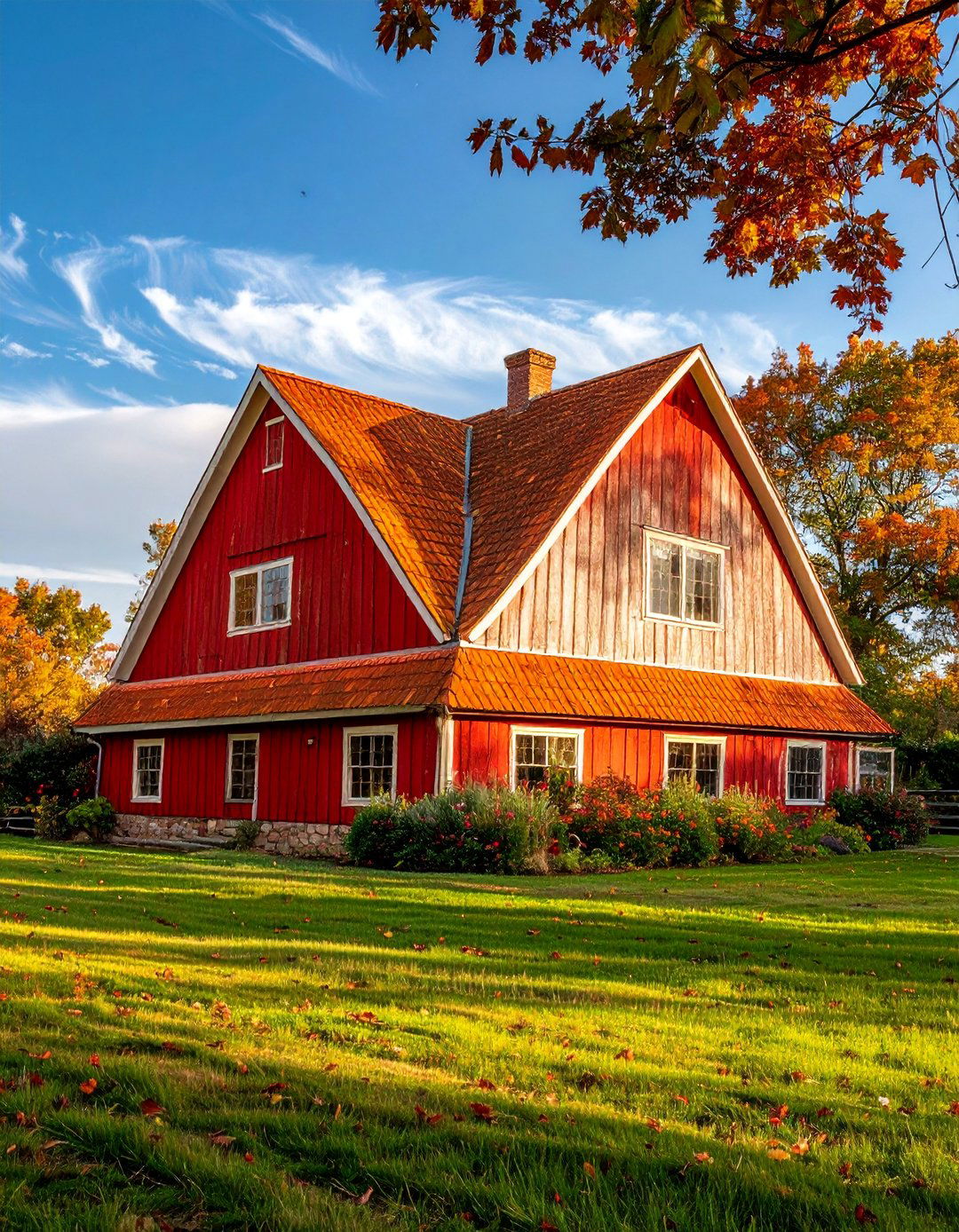
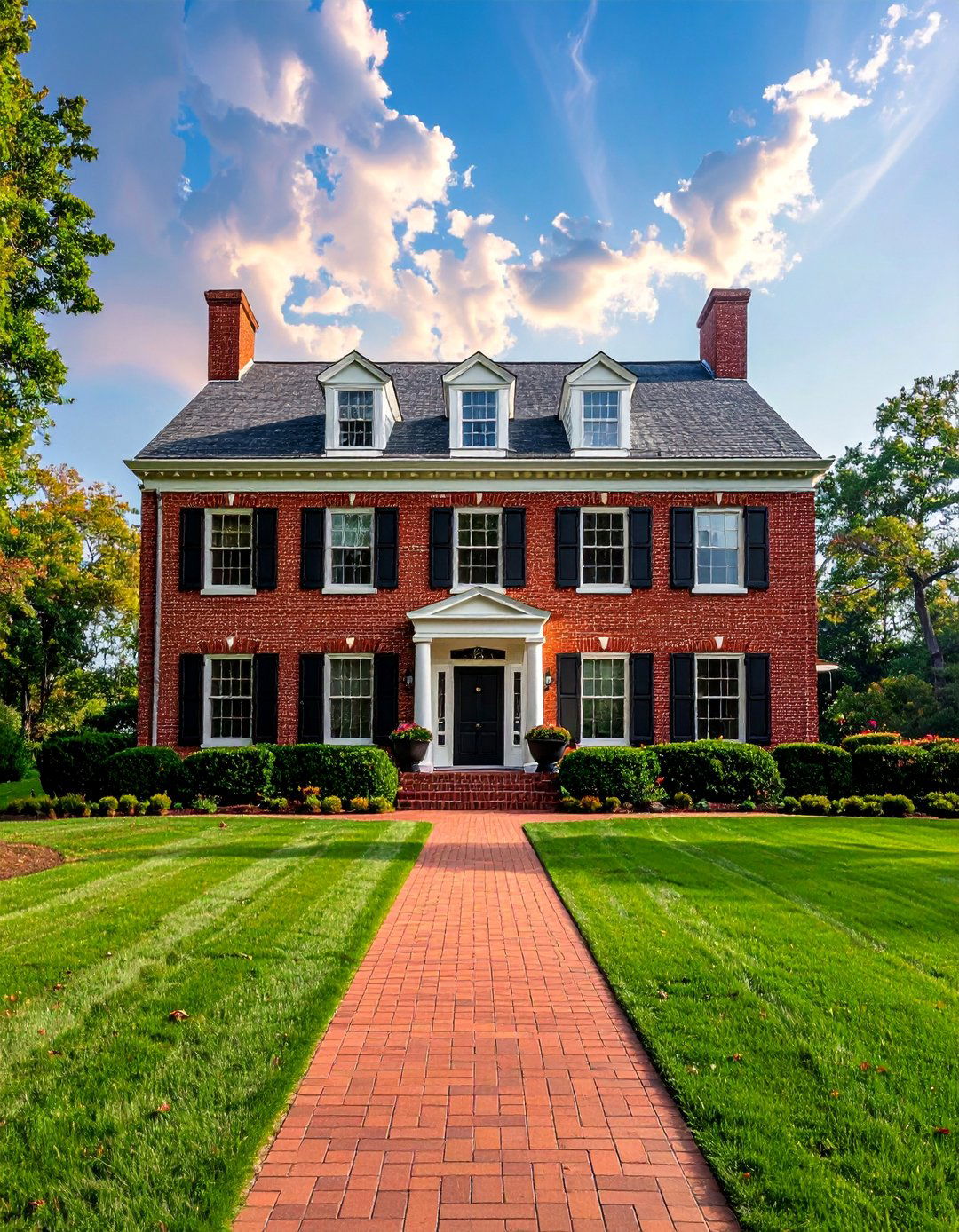
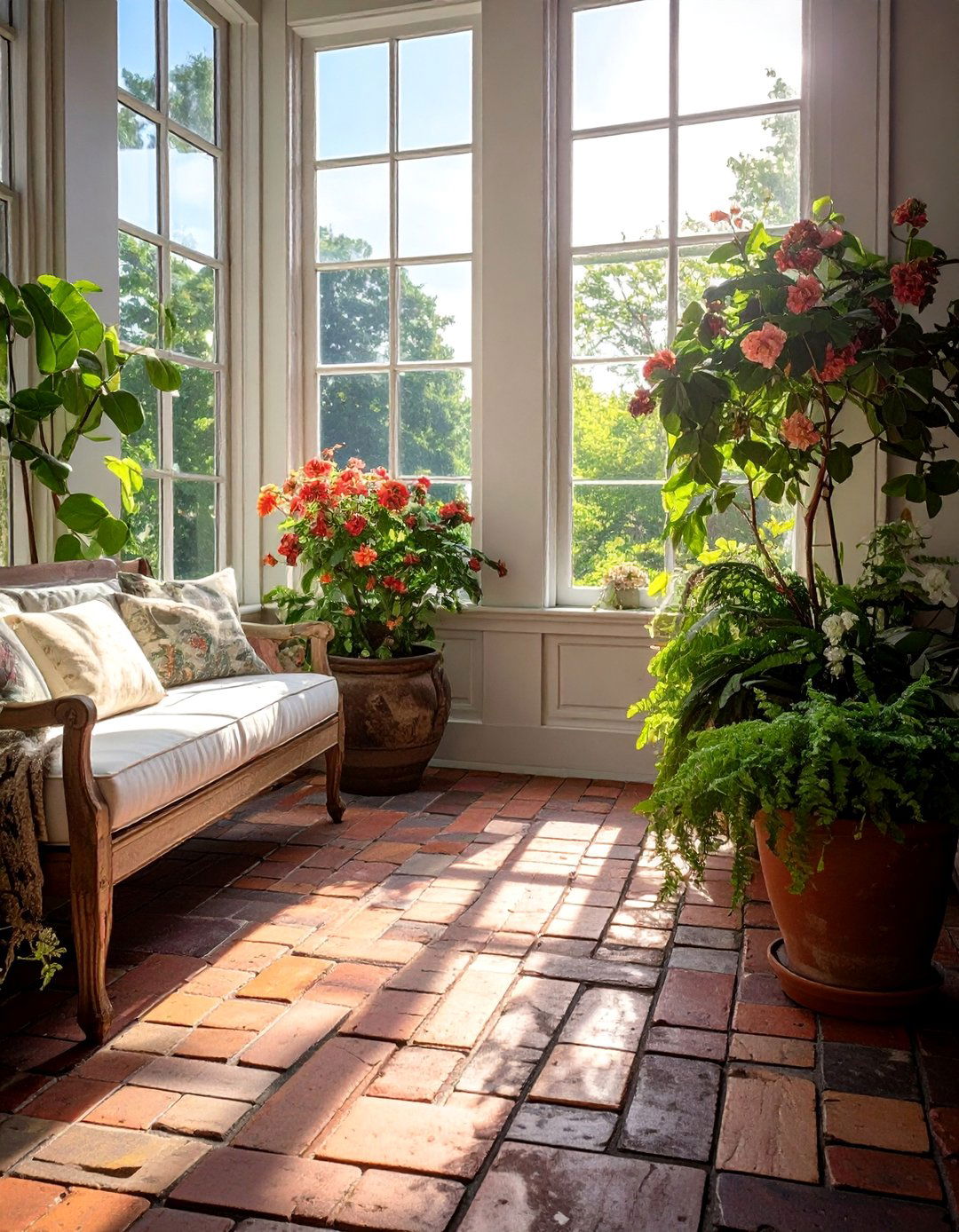
Leave a Reply